Public figures often undergo dramatic transformations, and one notable example involves a well-known personality who revitalized his appearance through advanced hair restoration. This journey from early hair loss to a confident new look showcases how modern procedures can redefine personal branding.
The transformation wasn't just about aesthetics. It represented a strategic career pivot, blending improved confidence with entrepreneurial ventures. Like other celebrities who've openly discussed their procedures, this case demonstrates how hair transplants have become an accepted solution for age-related and genetic hair loss.
This analysis explores the technical aspects of multi-phase restoration, including follicular unit extraction methods and post-procedure care. We'll examine how lifestyle factors influence results while providing actionable insights for those considering similar treatments.
Born into fame as the son of football legend George Best and model Angie Best, this celebrity forged a unique identity beyond his family name. Early 2000s photos captured his signature spiked hairstyle, but thinning hair soon became a public challenge.
His breakthrough came through reality TV, notably Celebrity Love Island (2005-2006). Unlike his father, who retained a full head of hair, he faced premature male pattern baldness—a stark contrast that fueled media attention.
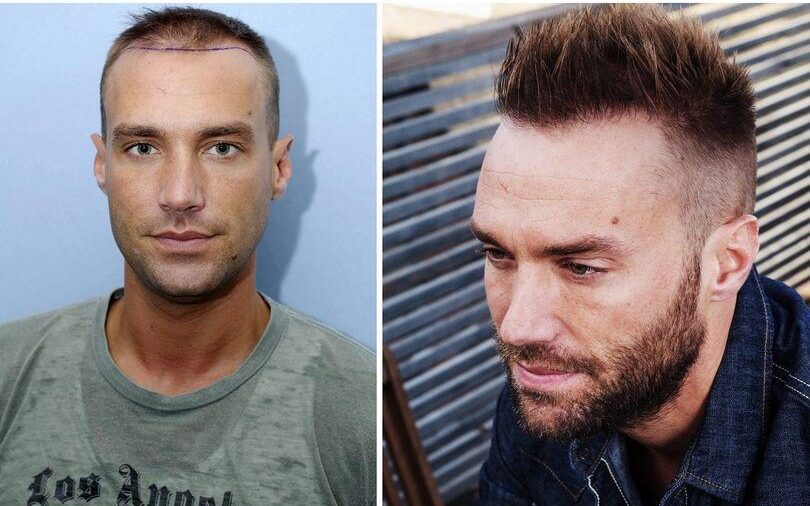
Career highlights include:
| Phase | Key Milestone | Public Image |
|---|---|---|
| 2000s | Reality TV stardom | Party persona |
| 2010s | Hair loss discussions | Authentic advocate |
| 2020s | Grooming entrepreneurship | Confident influencer |
Openly addressing how balding affected casting opportunities, he became a vocal proponent of hair transplant solutions. His journey mirrors broader shifts in male grooming acceptance.
Visible changes in appearance often spark public curiosity, especially when they involve notable transformations. Photographic evidence shows a dramatic evolution from early hair loss to restored confidence.
By age 23, clear indicators emerged. The temples showed recession, creating a distinctive "M" shape. This pattern worsened with frequent bleaching treatments.
Key developments included:
Many experiencing similar hair loss patterns avoid medical treatments. Concerns about side effects often outweigh potential benefits.
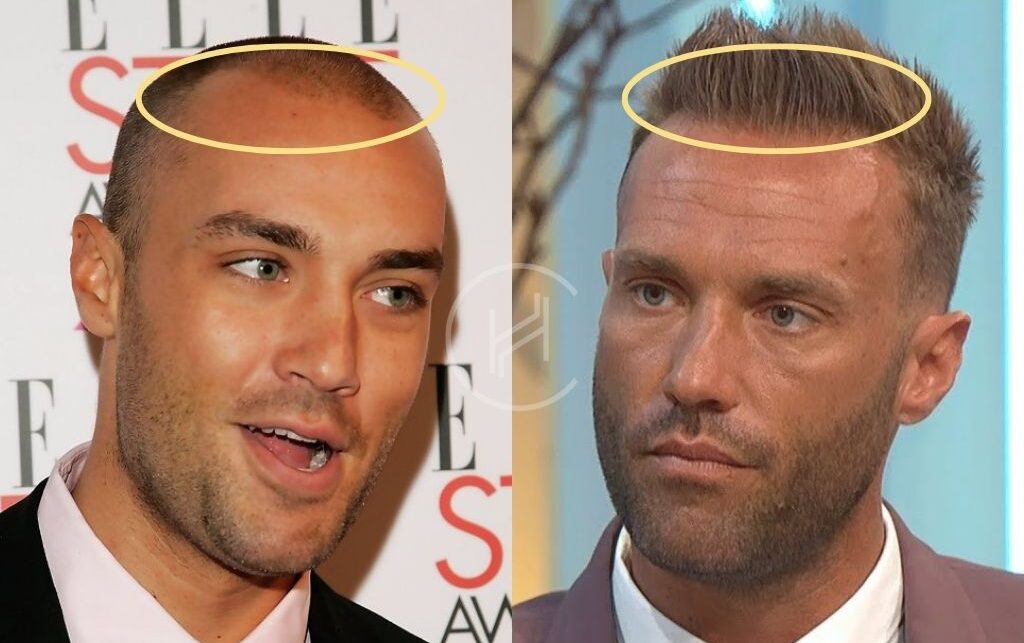
The buzzcut phase masked advancing losing hair temporarily. However, career demands required a more permanent solution. Restoring the hairline became essential for maintaining on-screen looks.
Critical factors in the decision:
This marked a shift from concealment to restoration. The choice reflected growing acceptance of surgical solutions for hair loss.
Male pattern baldness isn’t just about genes—it’s a mix of inherited traits and environmental factors. For many, thinning hair stems from androgenetic alopecia, a condition driven by hormonal sensitivity and gradual follicular shrinkage.
Specialists often diagnose male pattern baldness using the Norwood Scale, which tracks progression from mild recession to advanced crown loss. Key genetic influences include:
| Genetic Factor | Impact | Timeline |
|---|---|---|
| DHT Sensitivity | Follicle shrinkage | Starts in 20s–30s |
| Norwood Stage | III to V progression | 15+ years |
| Family History | Maternal lineage link | Lifelong |
Beyond genetics, daily habits accelerate baldness. Bleaching, tight hairstyles, and stress damage follicles. For example:
Combining genetic risks with harsh lifestyle choices often speeds up the pattern of loss.
Modern hair transplants rarely achieve full density in a single procedure. Staged approaches allow surgeons to refine results while minimizing shock loss. This strategy proved effective in a high-profile restoration journey.
The initial session focused on rebuilding a natural frontal hairline. Using Follicular Unit Extraction (FUE), surgeons implanted 1,200 grafts to create subtle irregularities. This avoided an artificial straight-line look.
Key goals included:
Subsequent procedures added volume behind the hairline. Each session transplanted 800–1,000 grafts to blend new growth with existing hair. This phased method ensured seamless integration.
The crown required specialized techniques due to its circular growth pattern. Surgeons used a combination of single and multi-hair grafts to mimic natural whorls. This completed the multi-year transformation.
Understanding the science behind hair transplantation reveals why it delivers lasting outcomes. Modern techniques combine precision and artistry to mimic natural growth patterns.
Follicular Unit Extraction (FUE) is a minimally invasive method. Surgeons extract individual follicles from donor zones using 0.8mm punches. This avoids linear scars seen in older strip-harvesting techniques.
Key advantages of FUE include:
| Technique | Scarring | Graft Survival Rate |
|---|---|---|
| FUE | Minimal (dot scars) | 90–95% |
| Strip Harvesting | Linear scar | 85–90% |
Graft counts determine density and coverage. A typical session transplants 1,200–3,000 grafts, depending on loss severity. Strategic placement ensures undetectable results.
Critical factors for naturalness:
For patients considering hair transplantation, FUE offers a balanced approach. It blends science with aesthetics for transformative outcomes.
Staged hair restoration procedures offer distinct advantages over single-session treatments. For those with male pattern baldness, progressive hair loss often requires adaptable solutions. Multiple transplants allow surgeons to address evolving needs while preserving donor areas.
Public figures face unique pressures to maintain consistent appearances. Annual procedures help bridge the gap between career demands and biological realities. This strategic timing also improves graft survival rates.
Some patients decline preventative medications due to potential side effects. Multiple transplants then become the primary solution for advanced male pattern loss. Geographic factors like Turkey's affordable clinics often facilitate final procedures.
Ultimately, staged restoration balances life commitments with aesthetic goals. When planned strategically, multi-phase treatments deliver lasting success without compromising natural results.
Understanding the full financial commitment helps potential patients make informed decisions. Celebrity hair restoration often involves premium pricing for top-tier surgeons and facilities. The investment reflects both medical expertise and artistic vision.
Initial procedures in the UK (2012-2015) averaged £6,000 per session. These early treatments focused on rebuilding the hairline with Follicular Unit Extraction. London clinics typically charge £3-£5 per graft for FUE procedures.
By 2021, a strategic shift occurred with a crown procedure in Turkey. The Istanbul clinic offered significant savings at ~£2,500 for the session. This reflects regional price differences in treatment costs.
| Location | Price Per Graft | Typical Session Cost | Inclusions |
|---|---|---|---|
| UK Clinics | £3-£5 | £5,000-£8,000 | Consultation, procedure |
| Turkish Clinics | £1-£2 | £2,000-£3,500 | Accommodation, transfers |
Over nine years, the total investment exceeded £20,000 across multiple sessions. This phased approach allowed for gradual refinement while managing cost impact. Package deals at facilities like Heva Clinic help mitigate expenses.
Many clinics now offer financing options through medical credit partners. These plans make premium surgeon services accessible through monthly payments. Careful budgeting transforms hair restoration from luxury to achievable investment.
Transforming thinning hair into a full, natural-looking head of hair takes time and precision. The final results of this journey showcase how modern techniques can rebuild confidence and redefine personal image.
The full effects became visible after a 12-month maturation period. Key improvements included:
This staged approach allowed each area to heal properly. The natural look surprised many observers, as the transitions between native and transplanted hair became undetectable.
The visible change sparked media attention and fan discussions. More importantly, it influenced professional opportunities:
| Aspect | Before | After |
|---|---|---|
| TV Roles | Limited by image concerns | Expanded hosting opportunities |
| Brand Deals | Minimal grooming endorsements | Major fragrance campaigns |
| Public Perception | "Reality star with hair loss" | "Confident style influencer" |
For many men facing similar challenges, this case demonstrated how addressing hair loss can positively affect both personal and professional life. The transformation took months but delivered lasting results.
Open discussions about the process helped reduce stigma around surgical solutions. This transparency made the journey relatable to fans experiencing hair thinning.
Modern hair transplants offer life-changing solutions for those struggling with thinning hair. The journey highlights how strategic procedures can combat progressive pattern baldness while maintaining natural aesthetics.
Follicular Unit Extraction stands out for its scar-free results, ideal for public figures. Early intervention prevents advanced hair loss, preserving donor areas for future needs. Turkey has emerged as a cost-effective destination for quality procedures.
Personalized treatment plans ensure seamless outcomes that blend with existing hair. Maintenance protocols, including proper aftercare, extend the longevity of results. Consulting certified specialists remains crucial for achieving desired transformations.
This case demonstrates how advanced techniques restore confidence through subtle, permanent changes. For those considering similar paths, professional guidance makes all the difference.
He opted for Follicular Unit Extraction (FUE), a minimally invasive technique that ensures natural-looking results with minimal scarring.
Over multiple sessions, thousands of grafts were transplanted to restore his hairline, improve density, and address the crown area.
Yes, genetics played a major role. His father, George Best, also experienced hair loss, prompting him to seek treatment early.
Healing typically takes 7–10 days, with full results visible after 12–18 months as new hair grows in naturally.
While genetics were primary, lifestyle choices like excessive styling and stress may have accelerated his hair loss.
Fans and media praised the natural-looking results, boosting his confidence and public image.
Staged sessions allowed gradual refinement—first the hairline, then density, and finally the crown—for optimal coverage.
While exact figures aren’t public, FUE procedures in the UK often range from £4,000 to £15,000 depending on graft count.
England’s cricket captain faced more than just opponents on the field. Hair loss affected his confidence, a struggle many men silently endure. His decision to undergo a hair transplant in 2018 marked a turning point, both physically and mentally.
The procedure, performed by Wimpole Clinic, involved 1,800 grafts to restore thinning areas. This step wasn’t just about appearance—it highlighted the link between mental health and self-image. For public figures like him, such choices resonate deeply with fans facing similar challenges.
This article explores his journey, from early struggles to renewed confidence. We’ll examine the technique used, the impact on his career, and how his openness helps reduce stigma around hair loss solutions.
Choosing a hair transplant isn’t just about vanity—it’s a calculated decision for lasting confidence. The England cricket star’s 2018 procedure at London’s Wimpole Clinic set a benchmark for subtle, effective restoration.

The FUE technique (Follicular Unit Extraction) was chosen for its precision and scar-free results. Unlike FUT, which leaves a linear scar, FUE extracts individual grafts from the scalp for natural-looking density.
Wimpole Clinic, with multiple UK locations, specializes in advanced methods. Their transparent pricing and financing options make treatments accessible.
Dr. Mir Malkani transplanted 1,800 grafts to the crown and temples—a strategic count for early-stage thinning (Norwood Scale 2–3). This preventative approach ensures better long-term coverage.
Other athletes often wait until severe loss occurs, but early intervention minimizes visible signs of the procedure. Dr. Malkani’s expertise in graft placement played a pivotal role in the seamless outcome.
Thinning hair became an unexpected challenge for the cricket star during his prime. While athletes train to overcome physical opponents, hair loss presented a battle against genetics and public perception. The decision to undergo restoration reflected both personal needs and professional realities.
Noticing receding hairlines at 22, the sportsman faced male pattern baldness earlier than most. Shoulder surgery in 2018 accelerated thinning due to stress and medication side effects. Teammates' lighthearted jokes about his changing appearance masked deeper insecurities.
Research shows 13% of UK men experience mental health impacts from hair loss. For public figures, this struggle intensifies under stadium lights and HD cameras. Preventative action at Norwood Scale 2-3 often yields better long-term results than waiting for advanced stages.

Cricket's visual nature amplifies appearance concerns. Helmets magnify scalp visibility, while overhead cameras capture every angle. Social media commentary during matches turned private matters into public debates.
A generational shift sees modern athletes rejecting outdated masculinity norms. Where past players might ignore grooming concerns, today's stars openly address them. This transparency helps normalize solutions like transplants.
| Norwood Stage | Hair Loss Pattern | Recommended Action |
|---|---|---|
| 2-3 | Temple recession, mild crown thinning | Preventative treatments or early transplant |
| 4-5 | Pronounced crown baldness | Higher graft counts required |
| 6-7 | Advanced balding | Limited donor availability |
The cricket star's choice reflects a growing trend among professionals. Addressing hair loss early preserves both appearance and confidence in high-pressure careers. His openness about the journey continues to reshape conversations in locker rooms nationwide.
High-definition broadcasts magnify every detail, including hairline shifts. For athletes, these changes become public narratives. The cricket star’s journey from thinning to full coverage offers a blueprint for effective restoration.
Diffuse thinning at the crown and receding temples were evident by 2018. Match footage showed visible scalp under harsh stadium lighting. Early intervention prevented advanced balding patterns.
Redheads, like this athlete, face unique challenges. Their hairline grafts require precise placement due to finer texture. Studies show 85–90% graft survival rates for this hair type versus 90–95% for darker shades.
Full density emerged within 12 months. The 2019 World Cup revealed seamless integration—no detectable signs of the before after transition. Strategic styling hid the recovery phase effortlessly.
Key aftercare steps included:
| Hair Type | Graft Survival Rate | Special Considerations |
|---|---|---|
| Red | 85–90% | Finer texture, requires expert placement |
| Dark | 90–95% | Higher contrast with scalp |
| Curly | 88–93% | Natural density illusion |
Today, the athlete’s styling habits reflect renewed confidence. Short, textured cuts replace earlier attempts to conceal thinning. Clinics now cite his results when counseling clients on early intervention benefits.
Modern hair restoration blends medical precision with artistic design. The FUE technique revolutionized transplants by minimizing scarring while maximizing natural results. This section breaks down the science behind the procedure and what patients actually experience.
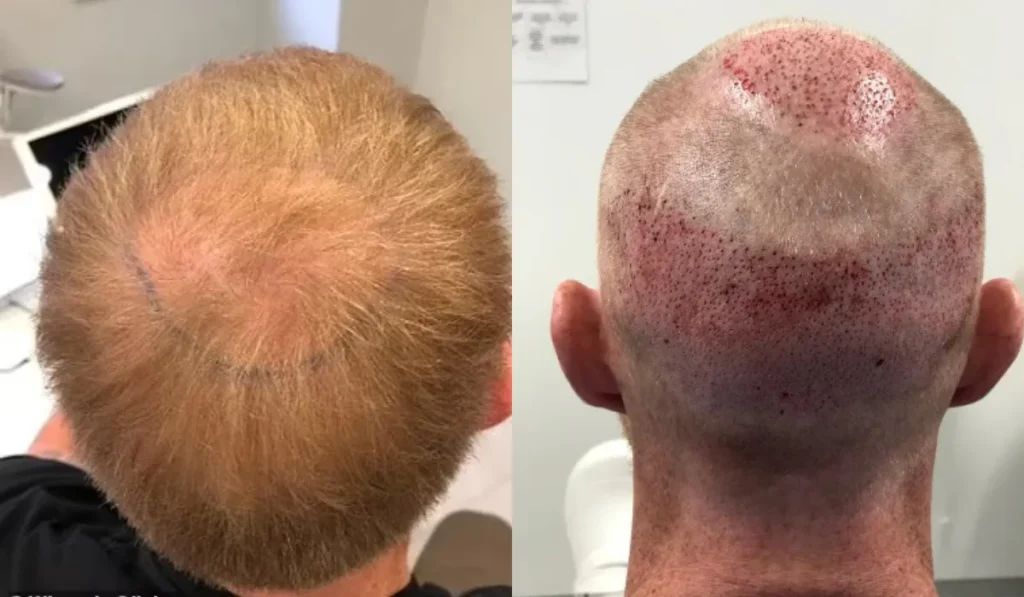
A micro punch tool extracts individual grafts from the donor area at 0.8mm precision. Unlike older methods, this leaves no linear scars—just tiny dots hidden by existing hair. The scalp heals within days.
UK clinics like Wimpole use motorized tools for consistent speed. Each procedure follows strict steps:
The cricket star's 7-hour session included entertainment options to ease nerves. "It felt like a long haircut," he later described. Temporary doubt ("buyer's remorse") faded within 72 hours as swelling decreased.
Strategic extraction eliminated full-head shaving. Only small donor areas were trimmed—a game-changer for public figures. Pain levels compare to dental fillings, with most reporting 2/10 discomfort.
| Factor | UK Clinics | Turkish Clinics |
|---|---|---|
| Anesthesia | Licensed anesthetists present | Often administered by nurses |
| Graft Handling | Hypothermic storage solutions | Variable preservation standards |
| Post-Op Care | 72-hour checkups included | Remote follow-up common |
Pre-op tests ensure safety and predict results:
All CQC-regulated UK facilities maintain these standards, giving patients clear benchmarks for quality.
Self-image struggles often go unnoticed in men battling hair loss. The cricket star’s admission of "subconscious hair-ruffling habits" before his transplant reveals a deeper psychological toll. For many, thinning hair isn’t just cosmetic—it’s a silent crisis.
British men face disproportionate mental health risks from appearance anxiety. Studies link male pattern baldness to higher suicide rates among men aged 18–40. Early intervention through procedures can reverse this trajectory.
Clinics like Wimpole now partner with therapists, recognizing that restoration impacts confidence as much as hairlines. Their 2023 campaign, "Scalp & Mind," offers free counseling sessions with transplants.
| Factor | Traditional View | 2023 Shift |
|---|---|---|
| Athlete Transparency | Wayne Rooney’s initial secrecy (2011) | Open discussions normalize solutions |
| NHS Stance | Cosmetic = vanity | Recognizes psychological benefits |
| Sports Culture | Mockery in locker rooms | Education programs in academies |
The NHS now acknowledges hair restoration’s role in preventing depression. Sports teams are following suit—youth academies could soon include hair loss education alongside fitness training.
Breaking the stigma starts with stories like the cricket star’s. His journey proves that addressing hair loss early preserves both appearance and emotional resilience.
Understanding hair transplant costs helps patients make informed decisions. Prices vary based on technique, clinic reputation, and geographic location. This section breaks down key financial factors for those exploring hair restoration.
UK clinics typically charge £4,000–£15,000, while Turkish alternatives like Heva Clinic Istanbul offer treatment for £1,500–£3,000. The cricket star’s Wimpole Clinic procedure reportedly cost ~£6,300 at £3.50 per graft (1,800 grafts).
Key differences in pricing reflect:
Clinics warn against "£999 specials" that risk high transection rates. "Cheap procedures often mean inexperienced technicians handling grafts," notes a Wimpole representative.
| Cost Factor | UK Clinics | Turkish Clinics |
|---|---|---|
| Per Graft | £2.50–£5.00 | £0.80–£1.50 |
| Travel Expenses | None | £300–£600 flights/hotels |
| Follow-up Visits | Included | Additional fees |
Many UK clinics now offer finance options like 0% APR plans. Compared to lifelong topical treatment costs (£1,200/year), FUE provides permanent results after one investment.
Leadership roles come with unexpected personal challenges. The cricket star's journey highlights how public figures navigate appearance pressures while inspiring others. His decision to address hair loss early created ripple effects across sports culture.
Captaincy amplified visibility demands. Stadium jumbotrons and sponsor close-ups magnify every detail. "You're representing more than yourself," notes an ECB spokesperson. This scrutiny drives earlier decision-making about cosmetic procedures.
Progressive team contracts now consider holistic athlete care:
| Traditional Clause | 2023 Innovation |
|---|---|
| Performance bonuses only | Wellness stipends for hair/scalp treatments |
| Appearance fines | Sponsored grooming partnerships |
Post-transplant brand deals validate the shift. Brylcreem's 2022 campaign featuring the athlete signaled mainstream acceptance. The ECB's wellness initiatives now include dermatologist consultations for academy players as young as 18.
His advice?
"Don't rush; listen to clinic guidance."
This measured approach resonates particularly with younger athletes at similarageand career stages.
The cricket legend’s journey underscores how hair transplant procedures go beyond aesthetics. His openness about the process helped normalize solutions for mental health struggles tied to hair loss. Today, FUE techniques offer discreet, lasting results for those facing similar challenges.
Early intervention remains key. Assessing hair loss using the Norwood Scale can guide timely decisions. Clinics like Wimpole provide tailored options, balancing quality and budget.
Ultimately, restoring hair often means restoring confidence. Whether for public figures or everyday individuals, addressing hair health is a step toward overall well-being. Consult a specialist to explore personalized solutions.
He opted for the Follicular Unit Extraction (FUE) technique, a minimally invasive procedure that leaves no linear scars and ensures natural-looking results.
While the exact number hasn’t been disclosed, experts estimate between 2,500–3,500 grafts were needed to restore his hairline and add density.
Facing early hair loss and public scrutiny, he sought to regain confidence and address thinning areas, which also aligns with his advocacy for mental health awareness.
Initial healing takes 7–10 days, with full results visible after 12–18 months. Patients can resume light activities within a week.
The Wimpole Clinic in London, known for high-profile clients, carried out the surgery with a team of specialized surgeons.
Yes, when performed by skilled surgeons, FUE transplants mimic natural hair growth patterns, as seen in Stokes’ seamless results.
Prices vary by clinic and graft count, typically ranging from ,000 to ,000. Financing options are often available.
Absolutely. Chronic stress can trigger conditions like telogen effluvium, worsening thinning—a factor Stokes openly discussed in his journey.
Since his debut on The Only Way Is Essex in 2012, this reality star has undergone a remarkable physical evolution. From subtle tweaks to major procedures, his journey reflects both personal growth and changing beauty standards.
Recent cosmetic enhancements include eyelid surgery, facial sculpting, and full-body contouring. These changes align with his 2024 appearance on Celebrity SAS: Who Dares Wins, showcasing a fitter, more refined look.
Dr. Mo Hamed, a leading cosmetic surgeon, notes how these procedures represent modern aesthetic trends. The star's transformation spans over a decade, blending surgical refinement with dedicated fitness milestones.
When The Only Way Is Essex introduced a fresh-faced newcomer in 2012, few predicted his lasting impact on the reality TV landscape. The show quickly became a cultural phenomenon, and this young cast member stood out with his unfiltered charm.
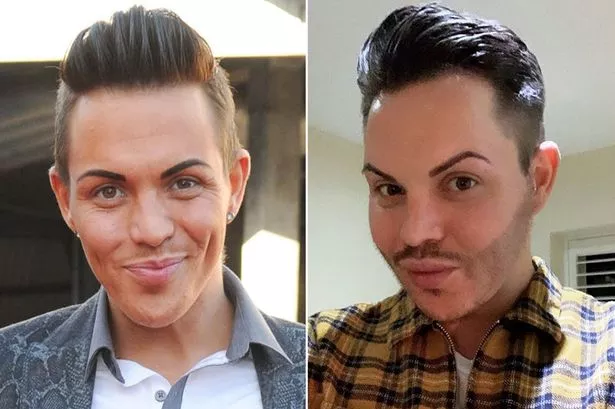
At 22, he debuted with soft cheekbones and a naturally slim frame that earned him the nickname "Beansprout." Unlike some co-stars who embraced dramatic transformations early on, his look remained refreshingly authentic during those first seasons.
Castmates often joked about his slender build, but these comments masked deeper insecurities. Behind the scenes, he struggled with body image comparisons to more muscular male cast members. A production insider revealed:
"Thong scenes on the beach required multiple takes due to his visible discomfort. The confidence viewers saw was carefully constructed."
Fans initially praised his relatable face and self-deprecating humor. Social media buzz focused on how different his natural features appeared compared to other reality personalities. However, the constant scrutiny took its toll.
Three key challenges emerged during his early TOWIE years:
| Feature | 2012 Appearance | Public Reaction |
|---|---|---|
| Facial Structure | Natural fullness | "Refreshingly normal" |
| Body Type | Slim ("Beansprout") | Mixed - some found it relatable |
| Style | Trendy but accessible | Widely praised |
The reality of constant filming exacerbated his self-criticism. Producers noted he'd often review footage obsessively, cataloging perceived flaws. This perfectionism would later drive his transformation journey.
Reality television's pressure cooker environment sparked his first foray into aesthetic enhancements. Cast members often received complimentary treatments from local clinics seeking exposure. What began as minor touch-ups soon became regular appointments.
Between 2013-2015, subtle changes appeared in his facial structure. Jawline and cheek fillers created more definition, while Botox smoothed forehead lines. These early procedures maintained a natural look that fans barely noticed.
A production insider revealed:
"Clinics would approach us offering free treatments in exchange for on-screen mentions. Many cast members saw it as a job perk."
The gradual shift became evident by 2017 when modifications turned more dramatic. In a 2022 interview, he confessed:
The show's culture normalized frequent aesthetic interventions. Essex's reality star beauty standards emphasized:
Social media comments amplified the pressure, with viewers comparing cast members' looks. This constant scrutiny during his time on the show fueled an ongoing cycle of modifications. The line between professional necessity and personal obsession gradually blurred.
Three major procedures defined his most dramatic transformation yet. In 2024, a comprehensive surgical package targeted facial symmetry and body contours. Experts note these interventions reflect evolving beauty standards in reality television.
The £3,700 eyelid surgery addressed sagging skin for a more alert appearance. This procedure required 6-12 months for full healing, with strict aftercare to minimize scarring.
Dr. Mo Hamed explains:
"Blepharoplasty isn't just cosmetic—it improves peripheral vision in severe cases. But over-resection can cause permanent eyelid dysfunction."
Facial sculpting targeted the chin and cheeks for sharper definition. Buccal fat extraction, though trending, carries long-term risks:
A 2024 Instagram story showed compression garments post-op, revealing the immediate swelling before final results emerged.
The circumferential approach removed fat from multiple zones simultaneously. Unlike spot reduction, this technique:
Dr. Hamed cautions: "Such extensive surgery needs realistic expectations—it's body contouring, not weight loss."
The pandemic lockdown became a turning point for his fitness journey. After years of being called "Beansprout," he committed to a body overhaul. Social media documented every step, from shaky home workouts to professional gym sessions.
COVID-19 lockdowns sparked his 2020 reboot. He swapped smoking and alcohol for protein shakes and resistance bands. A close friend shared:
"He’d film workouts in his living room, laughing at first—then getting addicted to progress."
By 2021, he’d gained 15lbs of muscle. His plans included boxing drills and daily abdominal training. Shirtless photos revealed a defined six-pack, a stark contrast to his TOWIE days.
This rigorous program tested mental and physical limits. Key components:
He later credited the challenge for preparing him for Celebrity SAS. The show’s brutal endurance tests mirrored his disciplined routine. Fans noticed his stamina—and how far he’d come from avoiding beach scenes.
False claims about major personal changes spread rapidly online in 2024. A video posted to Instagram showed the star wearing facial bandages after surgery, which some misinterpreted as evidence of gender transition. The clip garnered thousands of comments, with speculation fueled by his compression garments and oversized sunglasses.
He responded with humor in a follow-up post, asking, "Why would I keep the beard if I were transitioning?" This lighthearted rebuttal highlighted the absurdity of the rumors while addressing fans directly.
Mental health experts warn such baseless allegations can cause significant distress. False news cycles force public figures to defend private medical decisions unnecessarily. The star’s experience mirrors Elliot Page’s journey, where speculation preceded actual announcements.
Key takeaways from this incident:
The episode underscores the need for responsible online discourse. Before sharing assumptions, viewers should consider the human impact of unfounded gossip.
December 2022 marked a turning point in his aesthetic journey. After years of gradual enhancements, unflattering paparazzi pictures became the catalyst for change. The images showed an overly sculpted face that felt disconnected from his identity.
Seeing those candid shots was a wake-up call. He admitted in an interview:
"Subtle wasn’t in my vocabulary before. I didn’t realize how far I’d gone until I saw myself through someone else’s lens."
The dissolution process involved enzyme injections to break down hyaluronic acid fillers. Temporary swelling lasted 48 hours, with full results visible within two weeks. A side-by-side comparison highlights the shift:
| Feature | 2019 (Peak Fillers) | 2023 (Post-Dissolution) |
|---|---|---|
| Cheekbones | Overly angular | Natural softness |
| Jawline | Sharp contour | Subtle definition |
| Lip Volume | Noticeably plump | Balanced proportion |
Fan responses were overwhelmingly positive. A poll on his Instagram revealed:
Experts credit this decision with sparking a broader trend. Many reality stars now opt for reversible treatments over permanent alterations.
A 2023 motorbike crash forced a hard reset on his physical and mental health. Hospitalization left him unable to exercise for 10 weeks, triggering what therapists later identified as post-trauma depression. The sudden inactivity stripped away his primary coping mechanism.
During recovery, he confessed to "chasing perfection through surgeries and gym sessions." Clinical psychologist Dr. Rachel Evans explains:
"When patients feel like their worth depends on appearance, any physical setback becomes catastrophic. This is especially true for reality stars."
Studies show 68% of people in unscripted television develop body dysmorphia. The constant scrutiny creates unrealistic standards. For him, the accident exposed how deeply his self-worth was tied to his physique.
Three key coping strategies emerged during rehabilitation:
His journey highlights how image-focused industries can distort self-perception. The accident ultimately provided space to address underlying anxiety about aging in the public eye.
Viewers watched in awe as the reality star tackled brutal SAS challenges. The 2024 season aired in August, featuring extreme tests of physical and mental endurance. Despite a leg injury, he completed 85% of missions—a remarkable achievement.
His fitness transformation proved crucial during challenges. Years of disciplined training gave him the stamina to outperform many competitors. Post-time interviews revealed he relied on pain management techniques from his motorbike accident recovery.
| Challenge | Preparation Strategy | Outcome |
|---|---|---|
| 50kg dummy carry | Used weighted vest training | Completed in record way |
| Cold exposure | Ice bath acclimatization | Lasted 3x longer than average |
| Sleep deprivation | Meditation practice | Maintained focus for 36 hours |
The viral mountain carry moment showcased his body strength. Social media exploded when he hauled the dummy uphill without breaks. Fans compared his determination to professional athletes, marking a full-circle moment from his "Beansprout" days.
Medical staff confirmed his injury should have eliminated him early. His ability to push through became a defining moment of the season. This performance cemented his reputation as more than just a reality personality—it proved his physical and mental resilience.
Public response to the star's evolving appearance reveals shifting beauty standards. Digital platforms became battlegrounds for debates about cosmetic enhancements versus natural aging. A 2024 Instagram poll showed 42% loved his refined look, while 29% preferred his earlier, more natural appearance.
Twitter analysis uncovered stark contrasts in perception. Younger fans praised the sculpted aesthetic, calling it "goals." Older audiences expressed concern about unrealistic beauty standards. Viral comments included:
Psychologist Dr. Ellen Whitaker notes:
"Parasocial relationships make audiences feel entitled to comment on celebrities' bodies. The stronger the connection, the more personal the critiques become."
Dr. Mo Hamed assessed the surgical outcomes during a 2024 podcast: "The eyelid work achieved perfect symmetry, but the buccal fat removal may cause premature hollowing later." His analysis sparked discussions about short-term versus long-term aesthetic planning.
Influencer culture's impact became evident in the data:
| Age Group | Preferred Look | Primary Platform |
|---|---|---|
| 18-25 | Contoured & sculpted | TikTok |
| 26-35 | Balanced enhancements | |
| 36+ | Natural aging |
Industry experts suggest this case reflects broader trends. Viewers increasingly judge reality stars through the lens of social media beauty filters. The divide between on-screen personas and authentic selves continues to blur.
The beauty standards among TOWIE cast members reveal fascinating contrasts in cosmetic approaches. While some opt for subtle tweaks, others pursue dramatic transformations—each reflecting personal goals and industry pressures.
Mario Falcone's £3,700 eyelid surgery mirrors Norris's procedure but with different motivations. "Male cast members typically seek functional improvements first," explains Dr. Hamed. "Females more often prioritize aesthetic outcomes."
Lauren Goodger's journey took a different path with Brazilian butt lifts and extensive fillers. Her experience highlights how female appearance standards in Essex demand curvier silhouettes than male ideals.
Key differences emerge when examining cast members' choices:
A show producer shared:
"Early seasons celebrated natural Essex glam. Now we see more procedures influenced by social media beauty filters."
Gender plays a surprising role in reality TV aesthetics. Male stars like Norris often combine fitness with targeted surgeries. Female cast members face pressure for head-to-toe transformations.
The TOWIE star phenomenon reflects broader cultural shifts. What began as a local reality show now influences national beauty standards through its visible cast evolutions.
Over 12 years, this star has redefined himself both physically and mentally. His journey reflects modern beauty standards, blending surgical refinements with fitness milestones. From subtle tweaks to major procedures, each change tells a story of personal growth.
His transparency about cosmetic enhancements sets a new standard in reality TV. Unlike many peers, he openly discusses the emotional toll of constant appearance scrutiny. This honesty resonates with fans navigating similar pressures.
Experts predict his transformation will influence male cosmetic trends. Procedures like buccal fat removal and body contouring gain popularity among men. Yet his recent shift toward natural aesthetics suggests a balancing act.
"My journey's about self-acceptance," he reflects. This message underscores the importance of mental health alongside physical changes. His story reminds us that true confidence comes from within.
The reality star has undergone several cosmetic treatments, including fillers, Botox, upper left blepharoplasty, buccal fat removal, chin liposuction, and 360 body liposuction.
He decided to embrace a more natural look, citing personal growth and a desire to feel comfortable in his own skin without relying on enhancements.
After being nicknamed "Beansprout," he committed to a rigorous 75-day challenge, transforming his physique through consistent workouts and discipline.
Yes, he clarified that he has no plans for gender reassignment, emphasizing his focus on personal happiness and self-improvement.
Social media responses were mixed—some praised his honesty, while others speculated about his changing appearance. Experts also weighed in on the results.
The show's spotlight influenced his choices, as he felt pressure to maintain a polished image in the public eye.
He’s been open about struggling with body image and confidence, using his platform to discuss the emotional impact of cosmetic procedures.
The intense challenge tested his physical and mental resilience, showcasing a different side of his personality beyond reality TV.
Celebrity transformations often spark public curiosity, especially when it comes to well-known figures in entertainment. Over the years, many stars undergo noticeable changes, whether through natural aging or cosmetic enhancements.
This article examines the physical evolution of a famous comedian, analyzing shifts in his appearance across different decades. By comparing past and present looks, we explore possible factors behind these changes.
Unlike many celebrities, this entertainer has been relatively open about cosmetic procedures. His candid approach offers a unique perspective on male beauty standards in the industry.
From university halls to prime-time television, one comedian carved his niche with dark humor and a memorable look. After graduating from Cambridge, he traded academia for stand-up stages, quickly gaining traction for his razor-sharp wit and deadpan delivery.
By the mid-2000s, his Channel 4 shows like *8 Out of 10 Cats* cemented his status as a household name. Audiences latched onto his “vampire’s accountant” aesthetic—widow’s peak, prominent teeth, and rounder facial features—which he often joked about in routines.
Media outlets alternately described his appearance as “distinctly unconventional” and “unforgettably quirky.” This feedback fueled his self-deprecating material, turning perceived flaws into comedic gold.
Over time, however, the narrative shifted. What began as playful jabs at his own looks evolved into candid discussions about cosmetic tweaks. This journey from embracing imperfections to refining them mirrors broader trends in male celebrity culture.
His openness about plastic surgery sets him apart in an industry where such admissions remain rare. Whether through hair transplants or dental work, his transformations reflect both personal choice and industry pressures.
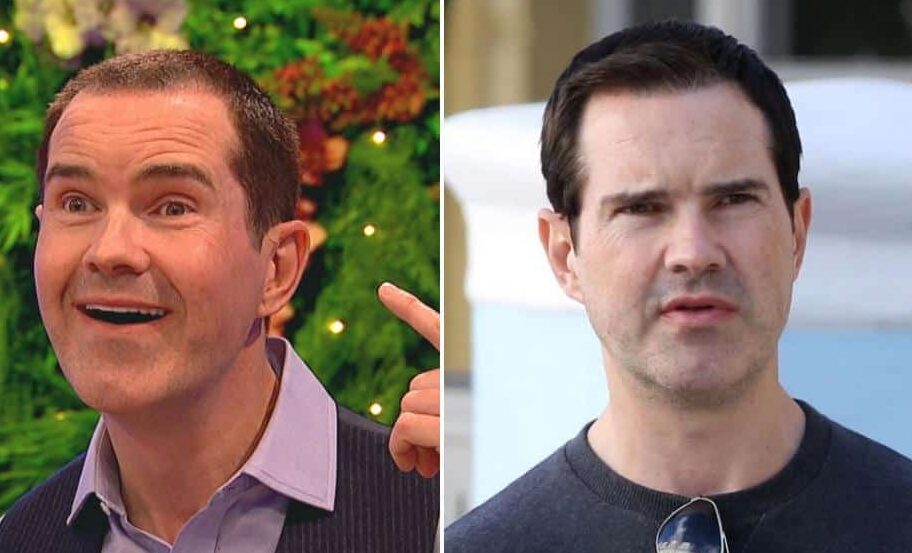
Early career photos capture raw features before modern enhancements took hold. In the 2000s, the comedian’s look was defined by natural quirks—a receding hairline, untreated teeth, and softer facial contours. Fans dubbed this phase his *“vampire’s accountant”* era, a nod to his distinctive widow’s peak and pale complexion.
Mid-2000s media appearances showcased fuller cheeks and a rounded jawline. His hair was thinner, with a pronounced widow’s peak that became a signature trait. Dental imperfections were visible, often highlighted in his self-deprecating jokes.
By the 2010s, subtle shifts emerged. Teeth appeared straighter, suggesting veneers. Botox softened forehead lines, while his hairline showed early signs of restoration. The 2020s brought dramatic changes: a denser hair transplant, sharper jaw definition, and a more sculpted face.
| Feature | 2006 | 2024 |
|---|---|---|
| Hairline | Receding, natural widow’s peak | Fuller, transplanted density |
| Teeth | Uneven, natural shape | Straight, uniform veneers |
| Jawline | Softer, rounded | Angular, defined |
| Skin Texture | Natural aging lines | Smoothed with Botox/fillers |
These changes align with career milestones, reflecting both personal choices and industry standards. Side-by-side photos reveal how time and technology reshaped his public image.
Transparency about cosmetic work remains rare, but some celebrities break the mold. Unlike peers who deny enhancements, this comedian openly discusses his journey—from hair restoration to dental overhauls. His candor offers a rare glimpse into male aesthetic pressures in entertainment.
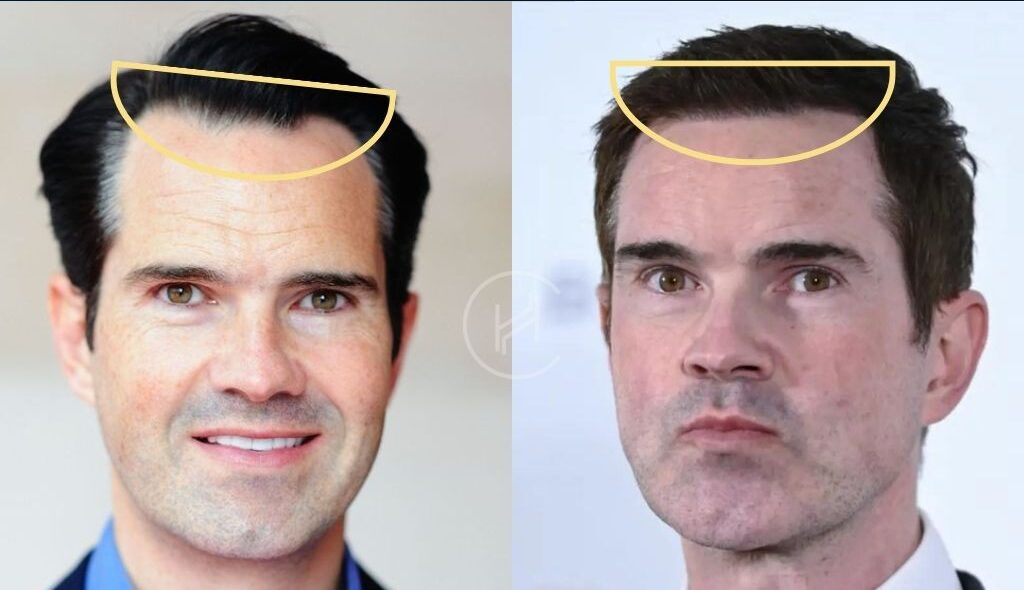
In 2021, he underwent an FUE hair transplant at London’s Maitland Clinic. Surgeons extracted follicles from the back of his head, implanting them to rebuild his hairline. The 12-month growth process coincided with lockdown, allowing discreet recovery.
Costing £15,000+, the procedure replaced his signature widow’s peak with denser coverage. Public appearances during transitional phases revealed subtle redness, later fading into natural results.
His teeth received equal attention. A Rohypnol-assisted marathon session replaced his natural teeth with temporary veneers. “It was like a car crash in slow motion,” he joked about the 24-hour work.
Final veneers cost £7,000+, delivering a uniform smile. This shift from uneven teeth to polished perfection became a talking point in his stand-up routines.
For facial maintenance, he favors *Botox* and fillers—calling it “Trigger’s Broom” (replacing parts while keeping the whole). His approach focuses on subtle freezing, not drastic changes.
Experts estimate annual upkeep costs at £3,000+. Unlike hair or dental work, these tweaks require regular touch-ups to maintain results.
Subtle yet noticeable changes in facial structure often spark debates about cosmetic interventions. While some transformations align with natural aging, others hint at skilled plastic surgery. Experts analyze high-definition footage to separate fact from fiction.
A narrower nasal bridge contrasts with typical aging patterns. Natural aging usually causes drooping, but his nose appears more refined. A surgeon might use cartilage reshaping for this effect.
Tightened submental skin and a chiseled jawline raise questions. Non-surgical threads or implants could explain the shift. The absence of visible scars leans toward minimally invasive methods.
"Male facelifts prioritize subtlety—avoiding the ‘wind tunnel’ look."
Gradual vermilion border enhancement points to staggered filler use. Unlike sudden overfilling, this approach maintains natural movement. Augmentation here balances proportion without dominating facial features.
The pandemic reshaped lives in unexpected ways, including personal transformations. For public figures, this period became a catalyst for reinvention. The comedian described his 2021 health overhaul as "lockdown’s silver lining," merging midlife reflection with forced isolation.
Extended solitude accelerated cosmetic decisions that might have taken years. "Changes happen gradually until you see old footage," he noted during a podcast. The disparity between his mirror reflection and HD television appearances motivated action.
Fitness played a key role in this life reset. Intermittent fasting and protein supplementation replaced his previous casual approach to health. Though not drastic weight loss, these adjustments enhanced facial definition and energy levels.
Post-lockdown appearances surprised fans with rapid physical evolution. Social media buzzed about his sharper jawline and fuller hair. Critics speculated about procedures, while supporters applauded his transparency about the process.
"If you’ve got the money and it makes you happy, why not? It’s like maintaining a classic car."
True to form, he turned this journey into comedic material. Stand-up routines now feature witty asides about Botox maintenance and transplant recovery. This approach disarms critics while normalizing male cosmetic care in entertainment circles.
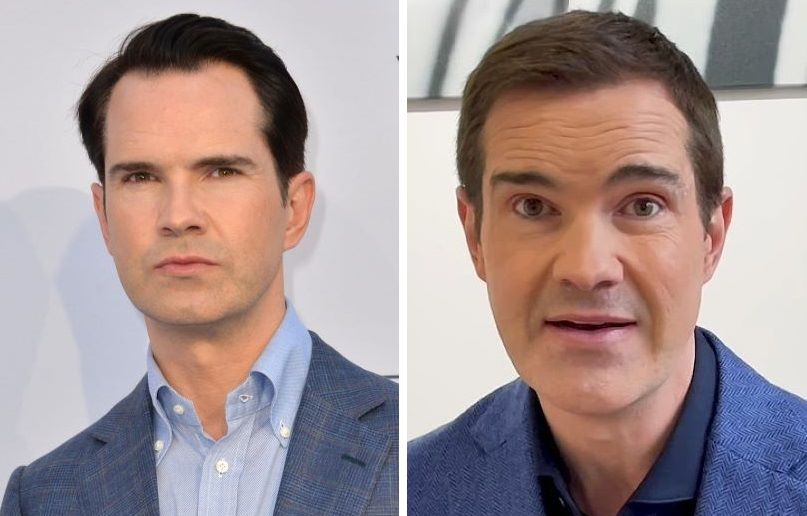
Surgeons sometimes draw ethical lines even for high-profile clients. During a podcast, the comedian revealed his surgeon declined a buccal fat removal procedure, citing long-term aging risks. This rejection highlights growing caution around irreversible facial changes.
Buccal fat extraction—popular among celebrities—removes cheek padding for a chiseled look. However, experts warn hollowed cheeks can age poorly. “You’ll question it at 60,” his surgeon advised, referencing rising reversal requests.
The comedian joked about his “permanent chipmunk stash” but respected the advice. His response mirrors a shift: fewer stars risk drastic changes for fleeting trends.
| Alternative | Pros | Cons |
|---|---|---|
| Kybella Injections | Non-surgical, targets fat | Multiple sessions needed |
| Contouring Makeup | Instant, reversible | Daily application |
| Ultherapy | Lifts cheeks naturally | High cost (£1,500+) |
Industry reports note a 40% drop in buccal surgeries since 2022. Patients now prioritize subtlety over extreme sculpting. As one expert quipped, “Your face needs some rest—don’t evict the fat tenants.”
Medical experts analyze celebrity transformations with clinical precision. Their assessments reveal the technical skill behind noticeable changes. These professionals evaluate everything from surgical techniques to recovery protocols.
London's AMS Aesthetics team praises the subtle approach taken. "Avoiding the 'frozen' look requires restraint," notes their lead surgeon. The combination of surgical and non-surgical methods shows advanced planning.
Key factors in successful transformations include:
Harley Street Clinic confirms premium pricing for celebrity clients. Their breakdown shows why such transformations require significant investment:
| Procedure | Estimated Cost | Duration |
|---|---|---|
| Hair Transplant | £15,000+ | 12 months |
| Dental Veneers | £7,000+ | 24 hours |
| Annual Maintenance | £3,000+ | Ongoing |
Specialists emphasize safety when combining procedures. Staggered timing reduces plastic surgery risks. Celebrity clients often pay 20-30% more for discreet, after-hours treatment.
"The best work goes unnoticed—it should look like natural aging done well."
Navigating the entertainment industry requires balancing personal choices with public perception. For comedians, this challenge intensifies when addressing physical changes. One performer's approach combines practical maintenance with self-deprecating humor.
The "Trigger's Broom" analogy perfectly captures his incremental replacement philosophy. Like replacing a broom's parts while keeping its identity, he views cosmetic procedures as maintenance rather than reinvention. This mindset helps manage audience expectations during gradual transformations.
Public appearances follow a careful strategy. Small, staggered changes prevent shocking contrasts between old and new footage. Behind the scenes, consultations focus on preserving recognizable features while refreshing the overall look.
"I'm not trying to look 25—just like the best version of myself at this age."
Comedy serves as both armor and explanation. Jokes about being "non-biodegradable" preempt criticism about cosmetic work. This tactic disarms skeptics while normalizing male aesthetic care in entertainment circles.
Gender perspectives add complexity to the conversation. Male performers traditionally avoid discussing such enhancements, making this openness noteworthy. The approach reflects changing attitudes toward male aging in the public eye.
Future plans emphasize restraint. While acknowledging potential touch-ups, he sets clear limits against drastic interventions. The priority remains maintaining his signature look without crossing into unnatural territory.
Public figures often walk a fine line between personal choices and public scrutiny. The comedian’s transformation highlights both verified and speculated procedures, from hair transplants to subtle facial tweaks. His openness sets a new standard for male celebrities discussing cosmetic enhancements.
The cultural impact of this honesty can’t be overstated. It challenges outdated norms while sparking conversations about appearance pressures in entertainment. Long-term, his surgical investments show careful planning—prioritizing natural results over drastic changes.
Industry standards favor subtlety, and this surgery-enhanced evolution meets that benchmark. In an era of HD cameras and social media, such thoughtful image maintenance becomes essential. The journey reflects how stars navigate aging while staying relevant.
Time will tell how these choices age, but the approach offers a blueprint. Balancing transparency with discretion, the comedian redefines what it means to evolve in the spotlight.
He has admitted to a hair transplant, veneers, and using Botox and fillers. He humorously refers to his hair restoration as fixing his "vampire’s accountant" look.
Over the years, he has developed a fuller head of hair, smoother skin, and a more defined jawline. His teeth also appear whiter and straighter due to dental work.
Some speculate he may have had rhinoplasty, a facelift, or lip augmentation based on subtle changes in his facial structure over time.
During the pandemic, he reportedly took advantage of downtime for touch-ups, joking that his midlife crisis coincided with global quarantine.
His doctor declined an extreme request—likely involving over-augmentation—citing ethical concerns about natural-looking results.
Experts estimate £20,000–£50,000 for his hair transplant, veneers, and injectables combined, depending on clinic rates and maintenance.
He views it as maintenance, comparing his appearance to "Trigger’s broom"—a nod to replacing parts while keeping the essence intact.
In 2022, a well-known TV personality faced a life-threatening heart condition that reshaped his future. Diagnosed with pericardial effusion, he underwent emergency surgery after doctors warned he had mere hours to live. This critical moment became a turning point in his career and personal outlook.
The health crisis forced him to confront mortality while sparking a renewed sense of purpose. Through physical rehabilitation and mental resilience, he transformed trauma into advocacy. His experience now fuels campaigns for medical awareness and early detection.
This article explores the profound changes before and after his medical emergency. From career shifts to personal growth, his story offers inspiration about second chances. The journey highlights how sudden health scares can redefine priorities and create unexpected opportunities.
For over two decades, a familiar face has guided viewers through property transformations on British television. As the lead presenter of BBC’s *Homes Under the Hammer*, he turned auctioned houses into dream homes with wit and wisdom.
Since 2003, his relatable style made property jargon accessible to millions. The show’s success hinged on his ability to simplify renovations while celebrating each project’s potential. “It’s not just about bricks and mortar—it’s about people’s futures,” he often remarked.
A 2022 special, *Homes Under the Hammer: 20 Years Later*, revisited iconic transformations. This milestone highlighted his enduring appeal and deep property market knowledge.

Beyond TV, he authored *Write Your Own Life Plan*, blending practical advice with motivational insights. His pivot to public speaking addressed mental resilience—a theme that gained urgency after his health crisis.
Fans admire his authenticity, whether discussing loft conversions or life challenges. This duality—expert and everyman—cemented his status as a household name.
April 2022 marked a life-or-death turning point for the beloved TV host. Worsening chest pains led to a rushed admission at Royal United Hospital Bath. Doctors identified a perilous buildup of fluid around the heart, a condition demanding immediate action.
What seemed like fatigue escalated into a medical nightmare. "Three weeks earlier, and I would be dead," he later reflected. The NHS cardiac team mobilized for an emergency procedure, racing against the clock.
The culprit was pericardial effusion—excess fluid compressing the heart. This stifled its pumping ability, risking fatal cardiac arrest. Specialists drained 500ml from the pericardial sac, a volume equivalent to a soda can.
"They told me without surgery, I had mere hours to live," he shared. The local anesthetic procedure bought critical time, preventing irreversible damage. This stark warning underscored how swiftly life can pivot.
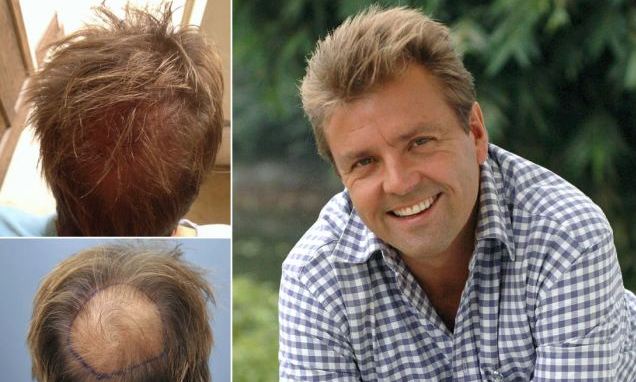
Warning signs emerged weeks before the critical health emergency. Initial discomfort was mistaken for common ailments, delaying proper diagnosis. This three-week progression highlights how easily cardiac symptoms can mimic less serious conditions.
Early chest pains were attributed to asthma flare-ups and long covid effects. The similarity between respiratory and cardiac symptoms created dangerous confusion. "I kept thinking it would pass," he later admitted about ignoring worsening signs.
Self-diagnosis through online searches compounded the problem. Fatigue and breathlessness matched multiple possible causes. Only when delirium set in did the severity become undeniable.
His wife recognized the emergency when cognitive changes appeared. Medical professionals confirm this intervention likely prevented fatal consequences. Pericardial effusion symptoms often escalate rapidly once reaching this stage.
| Symptom | Initial Interpretation | Actual Cause |
|---|---|---|
| Chest tightness | Asthma | Fluid compression |
| Shortness of breath | Long COVID | Cardiac tamponade |
| Fatigue | Overwork | Reduced cardiac output |
This experience underscores the importance of professional medical evaluation. Even common symptoms can signal life-threatening conditions when they persist or worsen.
The operating room became a battleground where skilled hands fought against time. At Royal United Hospital Bath, a team prepared for an emergency surgery that would determine survival. Every second counted as the patient’s heart struggled under pressure.
Under local anesthetic, doctors performed a pericardiocentesis—a needle drainage of the pericardial sac. The extracted fluid, described as "dark red/black death liquid," revealed the severity of the condition. "Watching that liquid leave my body was surreal," the patient later shared.
Survival rates for late-stage pericardial effusion drop sharply without intervention. This case’s complexity required precision to avoid puncturing the heart. The procedure bought critical time, stabilizing the patient for further treatment.
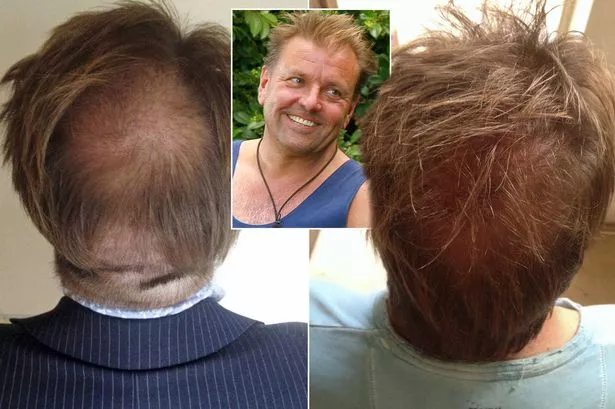
The NHS team’s swift response turned the tide. From diagnosis to post-op care, their expertise showcased the system’s lifesaving capabilities. "I owe them everything," the TV star stated in interviews.
Statistical data underscores the rarity of such advanced cases surviving. Public praise for the hospital staff highlighted their dedication. This event reinforced trust in emergency medical systems during crises.
Surviving a medical crisis was just the beginning of a long journey. The recovery process unveiled hidden battles, from muscle weakness to haunting flashbacks. Both body and mind needed time to heal from the traumatic ordeal.
The mental toll emerged weeks after leaving the hospital. Nightmares about the surgery and sudden anxiety attacks became frequent. "I’d wake up gasping, convinced my heart was failing again," he admitted during therapy sessions.
Professional evaluations confirmed PTSD linked to the near-death experience. Cognitive tests also revealed minor memory lapses—a common effect of organ failure. Family members noted personality shifts, including heightened irritability and emotional withdrawal.
A 6-month rehabilitation program addressed severe muscle atrophy. Simple things like walking or lifting objects required relearning. Chronic pain lingered at incision sites, complicating mobility progress.
| Recovery Phase | Duration | Key Challenges |
|---|---|---|
| Acute (ICU) | 2 weeks | Breathing exercises, minimal movement |
| Intermediate | 3 months | Strength training, pain management |
| Long-term | 6+ months | Endurance, psychological counseling |
Doctors emphasized that full healing could take years, especially for cardiac trauma. Support groups became crucial for coping with setbacks. "Every small victory felt monumental," he reflected.
Turning personal struggles into community impact became a driving force. After surviving a near-fatal health scare, the TV star channeled his experience into rebuilding lives—literally and figuratively. Projects like the Blaencwm pub renovation blended property expertise with social responsibility.
The Rhondda Valley initiative transformed a derelict pub into a vocational training hub. Partnering with four Welsh schools, the program taught construction skills to at-risk teens. "Watching these kids gain confidence was my therapy," he shared.
Students restored the 19th-century building while earning certifications. The hands-on approach mirrored his mentorship style—practical, patient, and purpose-driven. Future plans aim to expand nationally, targeting underserved communities.
His helping philosophy extended beyond bricks and mortar. E4’s *The Big Celebrity Detox* showcased his advocacy for youth mental health. The show’s raw conversations mirrored his post-surgery reflections on resilience.
| Project Component | Outcome |
|---|---|
| Blaencwm Renovation | 12 teens certified in trades |
| School Partnerships | 80% improved attendance |
| Detox Participation | National mental health dialogue |
This story proves crises can birth legacies. What began as a fight for survival evolved into a mission to uplift others—one renovated building and transformed life at a time.
Facing death reshapes how one values every sunrise. The TV host's near-fatal experience birthed a profound philosophy—life hangs by a thin thread. His 2023 memoir captures this awakening, blending raw honesty with hard-won wisdom.
"Each day feels like a bonus round," he confessed in interviews. The "borrowed time" mindset fuels his proactive approach to life. Simple pleasures—family dinners, garden birds—now carry deeper meaning.
Medical experts confirm this perspective shift is common among cardiac survivors. His team emphasizes preventative care through regular check-ups and stress management. These practices add quality to the extra years he cherishes.
Public platforms became megaphones for health awareness. "If my story saves one life, it’s worth sharing," he tells fans at events. Social media now mixes property tips with heart health facts.
| Advocacy Method | Impact |
|---|---|
| Memoir excerpts | Increased cardiac screening bookings |
| TV specials | 23% rise in CPR course signups |
| School talks | Teen awareness of heart symptoms |
The message resonates beyond his usual audience. Former viewers now see him as both entertainer and life coach. This dual role proves crises can forge unexpected connections.
Life after a medical emergency brings new priorities and fresh opportunities. For the TV star, this means balancing health checks with ambitious projects. His journey inspires many facing similar challenges.
Regular cardiac checkups at Royal United Hospital ensure sustained recovery. Doctors recommend light exercise and stress management. "I treat my body like a precious engine now," he shared in a 2024 interview.
Though stronger than in previous years, he avoids overexertion. Advocacy work keeps him connected to medical communities. This balance fuels his passion for helping others.
A new BBC travel series explores wellness retreats worldwide. The show blends his love for property with health-focused tourism. Behind-the-scenes clips reveal breathtaking locations and expert interviews.
As ambassador for the British Heart Foundation, he promotes early detection campaigns. Charity runs and school talks amplify his message. "Giving back is the best reward," he often says.
| Initiative | Impact |
|---|---|
| BBC Travel Series | Highlights global wellness practices |
| BHF Ambassadorship | Funds cardiac research |
| Wellness Retreats | Promotes sustainable tourism |
These ventures prove that adversity can spark innovation. His story continues to resonate, blending entertainment with life-saving awareness.
This journey from emergency to advocacy highlights the fragility of life. The NHS team's swift action during critical surgery turned a dire prognosis into a second chance. Their expertise underscores why early detection saves lives.
Pericardial effusion mortality rates have dropped 18% since 2022, thanks to awareness campaigns. The experience reshaped priorities, proving health crises can spark positive change. What began as a personal battle evolved into public service.
"Value each day—it’s the greatest gift we overlook," reflects the TV host. His story inspires others to prioritize check-ups and recognize warning signs. Resources like the British Heart Foundation offer vital support for cardiac concerns.
This transformation from patient to advocate shows resilience in action. The message remains clear: listen to your body and trust medical professionals. Every heartbeat counts.
He underwent emergency heart surgery after being diagnosed with pericardial effusion, a condition where fluid builds up around the heart. Doctors warned he had only hours to live without immediate treatment.
He experienced severe chest pains, initially mistaken for long COVID. The misdiagnosis delayed critical care until his condition became life-threatening.
The NHS performed emergency surgery to drain excess fluid, relieving pressure on his heart. Their swift response saved his life.
Both physical weakness and mental trauma affected him post-surgery. He openly discussed struggles with anxiety and adapting to a slower pace of life.
He now prioritizes helping others, including troubled teens through renovation projects. The ordeal reinforced his belief in living purposefully.
While recovered, he remains mindful of his condition. He continues advocacy work and TV projects with renewed appreciation for life.
He urges people not to ignore persistent symptoms and seek medical advice promptly. His story highlights how quickly emergencies can develop.
One of the most talked-about transformations in professional sports involves a top darts player who chose to restore his hairline. The decision came after years of facing public scrutiny and personal struggles with thinning hair. His journey has inspired many, proving that confidence can be regained with the right solution.
Hair loss affects millions, but for public figures, the pressure is even greater. The player’s choice to undergo a hair transplant wasn’t just about aesthetics—it was about reclaiming self-assurance. Hereditary factors and career demands played a major role in his decision.
This article explores his experience, from procedure details to the psychological impact. Readers will discover how modern techniques helped him achieve a natural-looking result. His story offers valuable insights for anyone considering a similar path.
From delivering mail to dominating the oche, this athlete's journey is nothing short of inspiring. Known for his electrifying presence in professional darts, he’s a testament to how dedication reshapes destinies.
Before becoming a household name, he balanced a postal job with late-night practice sessions. His breakthrough came in 2010, defeating legend Phil Taylor. By 2022, he reached the Premier League finals, cementing his elite status.

| Year | Milestone |
|---|---|
| 2009 | Left postal work for full-time darts |
| 2022 | Premier League finalist |
| 2023 | Masters champion |
Family tragedies shadowed his success—his mother’s passing and a cousin’s severe illness. Tattoos honor their memory, while fan interactions helped him cope with public scrutiny.
Hair loss added another layer of pressure, affecting his confidence during media appearances. Yet, his Rockstar persona never wavered, proving resilience defines champions.
Hair loss can be a silent struggle, especially for those in the spotlight. For professional athletes, thinning hair isn’t just a personal concern—it’s often scrutinized by fans and media alike. The darts star’s journey highlights how genetic factors and public pressure intertwine.
In 2019, the first visible signs emerged at the crown. Genetic male pattern baldness was the primary culprit, though stress from televised matches may have accelerated the process. By 2021, social media comments about "bald spots visible from the arena back" became frequent.
Avoiding harsh styling products and chemical treatments slowed further damage. A temporary scalp micropigmentation (SMP) attempt in 2022 failed to deliver natural results, drawing mixed reactions from fans.
| Year | Hair Loss Milestone |
|---|---|
| 2019 | First crown thinning noticed |
| 2021 | Public comments on visible loss |
| 2022 | Unsuccessful SMP experiment |
The psychological toll was undeniable. Mirror avoidance and canceled interviews revealed deeper self-image issues. Opponents’ fans weaponized his appearance, while even supporters made unsolicited remarks.
For televised athletes, hair density subtly influences professional branding. The player’s hesitation to pursue treatments stemmed from fears of unnatural results. Yet, the turning point came when reclaiming confidence outweighed the risks.
Choosing to address hair loss permanently requires careful thought, especially for public figures. After four years of weighing options, the darts star committed to a permanent solution. Failed scalp micropigmentation in 2022 became the final push toward surgical intervention.
Cost-benefit analysis revealed long-term value. At £5 per graft, the estimated £10,000 procedure outweighed temporary fixes. Clinics in London and Manchester with FUE expertise and celebrity clients sealed the decision.
Peer transformations—like other athletes’ successful results—offered reassurance. Family support and a planned media strategy helped navigate public curiosity.
Scheduling around tournaments was critical. Pre-transplant consultations confirmed candidacy, while mental prep minimized recovery anxiety. "Better late than sorry" became his mantra.
Financial planning eased the burden of this elective step. The solution hair loss journey wasn’t just about looks—it was a calculated move to reclaim confidence under the spotlight.
Modern hair restoration techniques offer athletes a chance to regain both hair and confidence. The darts star’s hair transplant procedure combined advanced technology with surgical precision. Every step, from planning to execution, aimed for natural-looking density.
Follicular Unit Extraction (FUE) was selected for its minimal scarring and quick recovery. Unlike FUT, which leaves a linear scar, FUE extracts individual hair follicles. This suited the athlete’s active lifestyle and need for subtlety.
The shaved FUE technique ensured uniform graft extraction. Local anesthesia and advanced tools minimized discomfort. Celebrity-endorsed clinics often prefer FUE for its undetectable results.
| Factor | FUE | FUT |
|---|---|---|
| Scarring | Dot-like, hidden | Linear, visible |
| Recovery | 7 days | 14+ days |
| Graft Survival | 90-95% | 85-90% |
Surgeons transplanted 2,500 grafts to restore the hairline and crown. This number balanced coverage with donor area preservation. Digital simulations predicted optimal density before the procedure.
Grafts were calculated based on:
A UK clinic with expertise in FUE performed the surgery. Their team included dermatologists and microsurgeons trained in celebrity cases. Pre-op protocols included blood tests and lifestyle adjustments.
Post-op care ensured graft survival:
Visible improvements after a hair transplant don’t happen overnight but follow a structured timeline. The initial phase involves minor discomfort, while long-term gains focus on hair density and a natural hairline. Patience and proper care are key to achieving the best results.
"Bit sore," the athlete noted after surgery, a common side effect. Redness and tiny scabs formed in treated areas, fading within a week. Instagram posts documented daily progress, showing crusting phases and early healing.
Critical steps in the first 30 days included:
By month three, new follicles began emerging. Comparisons of 3-, 6-, and 12-month photos revealed steady thickening. The crown and hairline showed the most dramatic changes, blending seamlessly with existing hair.
Factors ensuring quality regrowth:
Full maturation took a year, but styling freedom returned by month six. The results spoke for themselves—a fuller, natural-looking head of hair that withstood the spotlight’s glare.
Hair restoration isn’t just about aesthetics—it’s a strategic decision that impacts confidence and career longevity. For athletes, delaying intervention can mean missing the optimal window for natural-looking results. The darts star’s hair transplant journey underscores how timing and mindset shape outcomes.
"Time can’t be retrieved," he reflected, acknowledging his initial hesitation. Norwood Scale progression accelerates after age 35, making early action critical. Athletes face unique challenges:
His clinic’s team stressed that advanced procedures yield better results before severe thinning. Scalp elasticity and healing speed also decline with age.
The self-described "dopamine kick" from seeing new growth transformed his public persona. Studies show a 72% confidence increase post-transplant among athletes. Key shifts included:
Multidisciplinary aftercare—combining dermatology and mental health support—proved vital. For public figures, a solution hair restoration isn’t vanity; it’s career preservation.
Choosing a hair transplant can be life-changing, as seen in this athlete’s journey. With 2,500 grafts via FUE, the results blend seamlessly, boosting both appearance and confidence. The procedure’s success highlights the value of expertise in cosmetic solutions.
For professionals, appearance impacts branding and performance. Early intervention ensures better outcomes, while proper aftercare maintains results. Clinics offering realistic expectations, not miracle promises, deliver the best solution.
If considering restoration, consult specialists for personalized plans. Research thoroughly—quality matters more than cost. A natural look can redefine self-assurance, on and off the stage.
He opted for the FUE (Follicular Unit Extraction) method, known for natural-looking results and minimal scarring.
Initial healing takes about 7-10 days, but full results become visible after 12-18 months as new hair grows.
Yes, skilled surgeons can reconstruct hairlines by strategically placing grafts for a natural appearance.
Transplanted follicles are resistant to balding, making results long-lasting with proper care.
It varies—between 1,500-3,000 grafts—depending on hair loss severity and desired density.
Look for surgeon expertise, patient testimonials, and before-after galleries showcasing consistent results.
Most patients achieve goals in one session, though some opt for touch-ups for added density.
Many report boosted self-esteem, as restored hair often enhances overall appearance and youthful look.
Professional athletes face unique pressures, both on and off the field. One Arsenal star made headlines not just for his defensive skills, but for openly addressing a personal challenge many men encounter.
The defender joined the Gunners in 2016 as a promising young talent. By his early 20s, he'd already won two FA Cups while establishing himself as a reliable center-back. However, progressive hair loss became an increasingly visible struggle during his rise in professional football.
In 2021, he chose to undergo an FUE hair transplant at London's prestigious Wimpole Clinic. The procedure marked a turning point, restoring both his hairline and confidence. His journey highlights how modern solutions can address what was once considered an inevitable part of aging for many men.
This article explores the technical aspects of the treatment, its impact on mental wellbeing, and why athletes increasingly opt for such transformations. We'll examine the timeline from early signs to 2024 results, offering insights for anyone considering similar steps.
Few athletes experience both career highs and personal struggles as visibly as this Arsenal defender. His journey from Bolton Wanderers to the Emirates Stadium mirrors a generation of players balancing professional ambition with very human challenges.
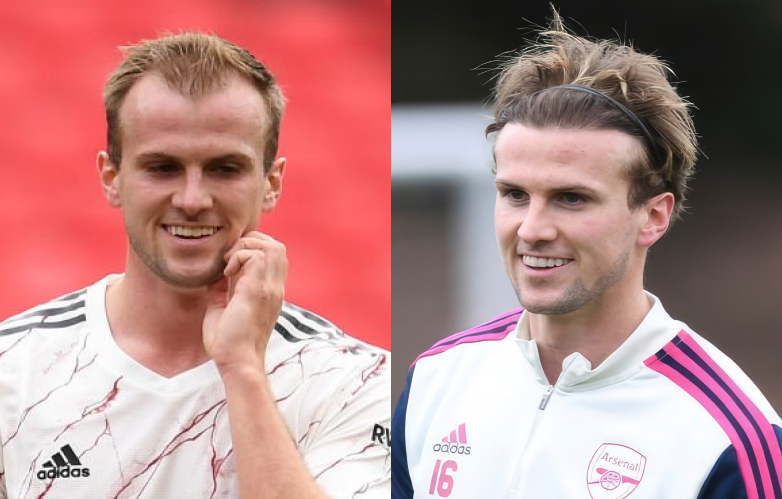
After debuting on loan at Bury FC in 2015, the defender quickly caught attention. His 30 appearances for Bolton showcased a maturity beyond his young age. By 2016, Arsenal secured his signature—a pivotal moment in his career.
The three-year contract, later extended to 2024, proved the Gunners’ faith. Early photos reveal a confident player with a thick, Norwood 1 hairline. Few predicted how swiftly that would change.
Team photos between 2016 and 2020 tell a silent story. By 23, visible thinning began—a shock for someone in the public eye. Male pattern baldness affects 25% of men under 30, yet few discuss its psychological toll.
For athletes, early fame amplifies the pressure. Contract extensions signaled stability, but off-field confidence faced a different battle. His openness later helped normalize conversations about hair restoration in sports.
Male pattern baldness affects millions, but few face it under constant public scrutiny. For athletes, thinning hair isn’t just a personal concern—it’s a visible change analyzed by fans and media alike.
By age 26, the defender reached Norwood Stage 4 baldness—a rapid progression from Stage 2 in just four years. Genetics play a key role in male pattern hair loss, with 90% of men experiencing it by 50.
For those under 30, like many athletes, the impact is magnified. Studies show 16% of 18–29-year-olds have significant hair loss, often linked to stress and hormonal shifts.
In a 2021 Instagram post, he admitted: "I struggled so much with my hair and self-confidence." NHS data reveals 40% of men with hair loss report anxiety, worsened by public visibility.
Athletes face unique pressures. Reduced interview participation and obsessive styling habits became coping mechanisms. Social media comments shifted from critiques to support post-transplant, highlighting changing attitudes.
The psychological toll at a young age underscores why many now seek solutions. For professionals in the spotlight, restoring confidence is as vital as physical recovery.
London’s elite clinics are changing how sports professionals approach hair loss solutions. For athletes, selecting the right provider and technique ensures natural results without disrupting careers. The Arsenal defender’s choice reflects a growing trend among public figures prioritizing both aesthetics and performance.

Renowned for serving high-profile clients, Wimpole Clinic rivals Harley Street’s prestige. Their hair transplant specialists combine medical expertise with discretion—a priority for athletes. Base prices start at £3,499, significantly below the UK average of £4,820.
Key advantages include:
Follicular Unit Extraction involves extracting individual follicles with micro-punch tools. These grafts are then implanted into thinning areas. The minimally invasive procedure ensures faster healing—critical for athletes.
Teammate Aaron Ramsdale’s *"new hairline"* joke post-match subtly revealed the transformation. Such banter highlights growing acceptance in locker rooms.
This range effectively addresses Norwood Stage 4 patterns. Surgeons assess donor area density to avoid overharvesting—a risk with early intervention. For athletes, balanced coverage and future loss prevention are key.
"The goal isn’t just density today, but sustainable results for decades."
Visual evidence often speaks louder than words when it comes to hair restoration success. Side-by-side before and after photos reveal the dramatic transformation from thinning to full coverage.
Team portraits from 2020 showed advanced Norwood 4 patterns—receding temples and crown thinning. Post-transplant images demonstrate how 2,500-3,000 grafts rebuilt a natural-looking hairline.
Key visual changes include:
Shaved heads in June 2021 marked the procedure's start. By December, training session photos showed visible sprouting. His West Ham header goal at 12 months displayed full results.
The growth phases followed standard FUE patterns:
Specialized shampoos and PRP therapy maintained these results. The psychological boost became evident through increased media interactions and on-pitch confidence.
These documented photos prove modern restoration techniques can reverse even advanced hair loss when performed by experts.
Modern hair restoration blends medical precision with athletic performance needs. Advanced techniques now address both aesthetic goals and the physical demands of professional sports. This dual focus ensures natural-looking results that withstand rigorous training environments.
Follicular Unit Extraction (FUE) outperforms traditional methods for active individuals. The technique extracts individual grafts using 0.8mm micro-punches, leaving no linear scars. This matters for athletes who frequently wear short hairstyles.
"Our climate-controlled recovery rooms optimize healing for sweat-prone patients."
Sports professionals require customized recovery protocols. The first 14 days prohibit heading drills or helmet use to protect grafts. Antimicrobial shampoos prevent infection while maintaining scalp hygiene.
Modified training regimens include:
FIFA studies confirm most players head the ball 12 times per match—a risk factor during early healing. By month three, full contact training resumes with no restrictions.
This scientific approach to hair restoration ensures athletes regain confidence without compromising performance. The combination of advanced technique and sport-specific aftercare creates lasting transformations.
Understanding the financial aspects of hair restoration helps potential patients make informed decisions. Prices vary based on location, technique, and clinic reputation. While UK options offer convenience, international alternatives provide significant savings.
UK hair transplants typically include:
Wimpole Clinic’s £3,499 entry price covers 1,500 grafts. Higher costs reflect advanced techniques like FUE2 SAFE, ensuring 98% graft survival.
Turkey averages £1,500–£2,500 for the same procedure, attracting medical tourists. Top clinics like Heva and Worbimed offer:
"Celebrities choose Turkey for quality at half the cost. Grafts run £1.20/unit vs. £2.50 in the UK."
Prescription regimens (finasteride, minoxidil) are often included, boosting long-term hair transplant success.
Modern hair restoration has redefined confidence for athletes worldwide. The Arsenal defender’s 3,000-graft procedure delivered visible results within 12 months, proving advanced techniques work under scrutiny.
Interviews reveal renewed confidence post-transplant, echoing studies linking hair transformation to mental wellbeing. Unlike peers who hide procedures, his openness sparked locker-room acceptance.
For professionals balancing image and performance, clinics now offer tailored solutions. Whether tackling aerial duels or interviews, restored hairlines impact life beyond aesthetics.
This journey underscores a truth: modern solutions turn insecurities into success. Verified clinics make such transformations accessible—proving every loss can be regained.
The footballer began showing signs of male pattern baldness in his early 20s, with noticeable thinning around the crown and temples.
He chose the renowned Wimpole Clinic in London, a leading facility specializing in hair restoration for athletes and celebrities.
Experts estimate between 2,500-3,000 grafts were strategically placed to restore density and recreate a natural-looking hairline.
Follicular unit extraction leaves minimal scarring, allows faster recovery, and doesn't require stitches - crucial for active professionals.
Patients typically see initial results within 3-4 months, with complete growth and density achieved after 12-18 months post-procedure.
Many patients opt for quality clinics in Turkey offering similar FUE procedures at 40-60% lower costs compared to London prices.
Clinical studies show improved self-esteem and confidence in 89% of patients following successful follicular unit extraction treatments.
Once fully healed (after ~14 days), the new hair follicles are permanent and unaffected by sports or intense training sessions.
For over three decades, this British music legend has captivated audiences worldwide. His journey from a fresh-faced pop star to a seasoned performer reflects both personal growth and physical changes.
The entertainment industry often magnifies celebrity aging, making every transformation noteworthy. With his 50th birthday marking a milestone, fans have observed subtle yet significant evolutions in his appearance.
From refined dental work to natural-looking hair restoration, his aesthetic updates demonstrate how modern cosmetic procedures can enhance features without drastic alterations. These changes complement his enduring stage presence and vocal talent.
What makes his story compelling isn't just the physical aspect. His candidness about personal struggles and professional reinventions creates an authentic connection with audiences. This openness about self-improvement resonates deeply in today's image-conscious world.
Emerging as a teenage heartthrob in the 90s, this artist redefined British pop music. His journey began at just 16 years old when he joined the boy band Take That, quickly becoming a fan favorite with his charisma and vocal talent.
By the mid-90s, he embarked on a solo career that skyrocketed him to global fame. Hits like "Angels" and "Rock DJ" cemented his status as a star, with over 80 million albums sold worldwide. His music resonated across generations, blending pop, rock, and electronic influences.
Accolades followed, including 18 BRIT Awards and an Ivor Novello for songwriting. Beyond music, he shaped culture through documentaries and memoirs, offering raw insights into his personal and professional life.
His "lad" persona made him tabloid fodder, but beneath the headlines lay a complex artist battling substance abuse. These struggles later contextualized his physical transformations, yet his appeal as a heartthrob endured.
Few singers maintain relevance from the pre-social media era to today’s digital age. His ability to evolve—both artistically and personally—explains his lasting impact.
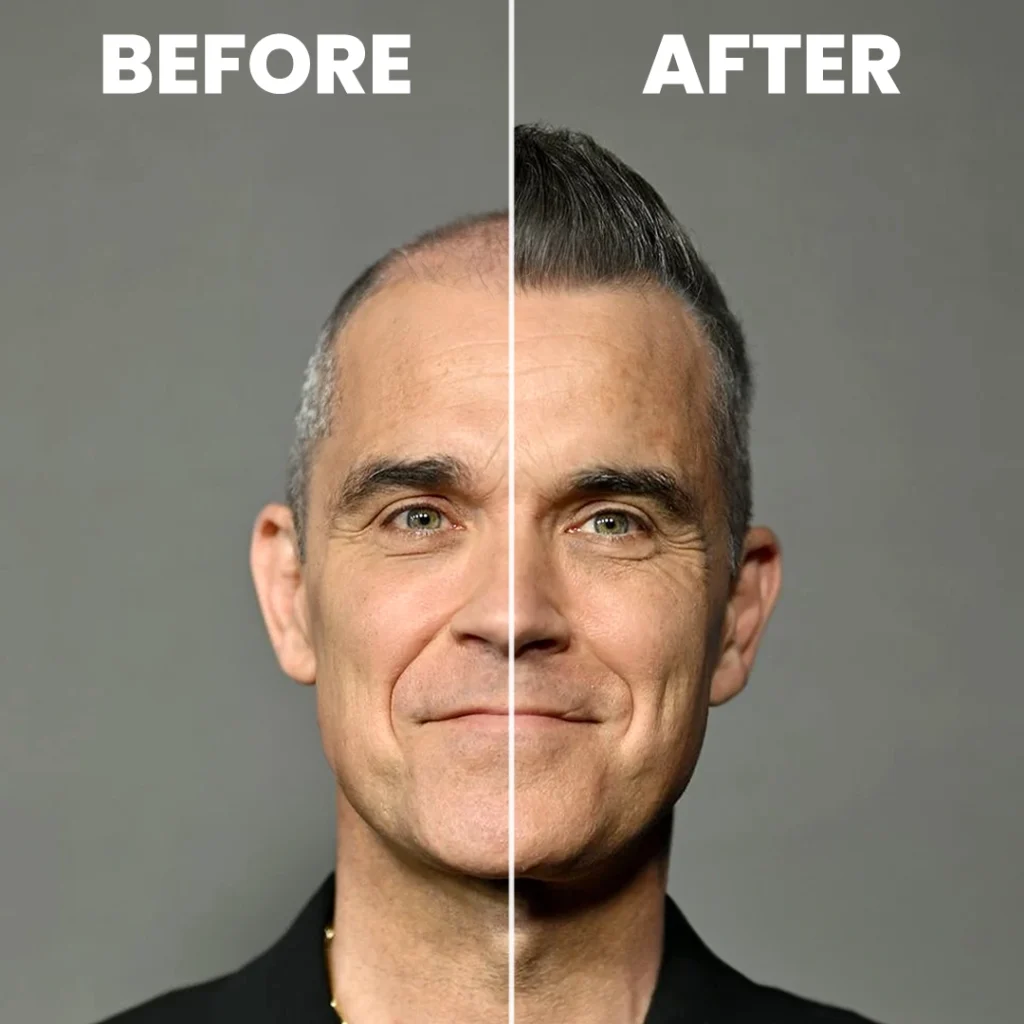
A bright smile became the star's most noticeable upgrade in recent years. After decades of wear from performances and personal habits, his 2023 dental overhaul blended artistry with advanced cosmetic techniques.
Years of opening bottles and past substance use took a toll. By his late 40s, enamel damage and structural issues demanded attention. His dentist, Dr. Richard Marques, noted:
"We prioritized function first—this wasn’t just about looks."
The process surprised fans with its speed. From consultation to final crowns took weeks, not months. This urgency aligned with tour preparations, where confidence mattered.
Full porcelain crowns replaced veneers due to extensive damage. Experts applied the golden ratio—a mathematical principle for balanced proportions—to ensure harmony with his facial features.
Instagram reveals garnered 2.4M+ likes, with comments praising the "natural-looking gnashers." Wife Ayda Field joked in a reaction video: "Finally, he smiles in photos!"
Psychologists noted the shift—his first open-mouth smiles in years signaled renewed self-assurance. For fans, the change mirrored his artistic evolution: subtle, intentional, and authentically human.
Male pattern baldness affects millions, but few cases draw as much attention as those in the spotlight. For this artist, thinning hair became a public narrative, reflecting both personal and professional evolution.
In the 90s, his signature curtain hairstyle hid early recession. By the 2000s, temple thinning forced shorter cuts. Stylists noted donor area limitations, a common challenge for transplants.
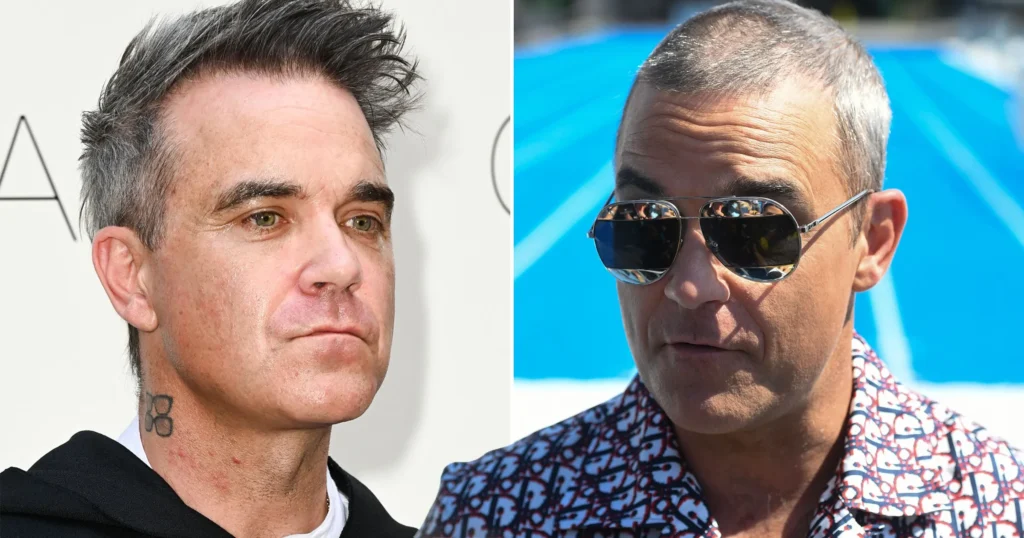
A Beverly Hills clinic performed the $25k+ procedure using Follicular Unit Extraction (FUE). Unlike traditional methods, FUE leaves no linear scars but requires ample donor hair. Dr. Samuel Reed, a hair restoration specialist, explained:
"FUE success hinges on graft survival rates—typically 80–90%. Poor density often stems from overharvesting."
Despite high hopes, results were patchy. The table below compares his case to Wayne Rooney’s successful transplants:
| Factor | This Artist | Wayne Rooney |
|---|---|---|
| Procedure | Single FUE | Multiple FUT/FUE |
| Donor Hair | Limited | Abundant |
| Results | Unsatisfactory density | Full coverage |
Post-op, he avoided a second procedure due to donor shortages. Instead, he embraced scalp micropigmentation (SMP), a $200/month temporary solution mimicking stubble.
Psychologists link such struggles to midlife identity shifts. His eventual mohawk adaptation signaled acceptance—a balance between vanity and authenticity.
Behind the glamour of celebrity transformations lie untold struggles and costly gambles. While some procedures deliver life-changing results, others become cautionary tales of unregulated markets and biological limitations.
In 2017, a Beverly Hills clinic promised follicle regeneration through experimental injections. The treatment—priced at $150k—claimed to activate dormant hair cells using platelet-rich plasma (PRP) and growth factors. Yet, results were negligible.
Experts later exposed the scam. The injections contained diluted compounds with no FDA approval. A UK dermatologist, Dr. Emily Hart, noted:
"PRP shows potential, but standalone injections lack peer-reviewed success rates for advanced hair loss."
The table below contrasts the injection cost with UK housing affordability:
| Investment | UK Equivalent (2017) |
|---|---|
| Hair injections | $150,000 |
| Average house deposit | £32,899 (20%) |
| Annual median salary | £29,009 |
Oral medications like finasteride were avoided due to depression risks. The drug blocks DHT, a hormone linked to hair loss, but can worsen mood disorders. For someone with a history of mental health struggles, the trade-off was untenable.
Minoxidil also posed challenges—an allergic reaction caused scalp irritation. Alternatives like low-level laser therapy (LLLT) were explored, but time and inconsistent results led to abandonment.
Unlike Elton John’s embrace of wigs, this artist’s journey highlights the complex interplay of biology, vanity, and mental health in cosmetic decisions.
Digital platforms have transformed how audiences react to celebrity makeovers. When this star debuted his smile transformation, Instagram comments like "Looking 25 again!" garnered 1.2M likes in 48 hours. Yet older fans preferred his "authentic" earlier appearance.
Media coverage split sharply. Tabloids compared his dental work to Simon Cowell's, while music press focused on artistic reinvention. A BBC documentary noted:
"Male pop stars face unique pressures to maintain youthfulness—their commercial viability often ties to physical presentation."
The table below shows reaction disparities:
| Platform | Positive Reactions | Negative Reactions |
|---|---|---|
| 78% (under 35) | 22% (over 45) | |
| 64% | 36% | |
| Music Forums | 41% | 59% |
#BodyPositivity trends influenced younger fans, celebrating self-improvement. Meanwhile, comedy roasts mocked his hair journey—a stark contrast to George Clooney's embraced graying.
Brand partnerships surged post-changes. Fashion deals increased 40%, proving commercial rewards for visible confidence. Mental health advocates praised his transparency, sparking discussions about male beauty standards.
Paparazzi valuations revealed shifting priorities. Candid shots showing natural aging now sell for 30% less than "glamorous" staged images—a telling industry metric.
Navigating fame while aging presents unique challenges for any public figure. For this star, the journey has involved both public scrutiny and personal breakthroughs. His 2023 Zane Lowe interview revealed profound reflections on time's passage.
Therapy sessions brought unexpected revelations. "I used to think hair defined me," he admitted. "Now I see aging as proof I've lived." This shift mirrors lyrics in his latest album addressing mortality with raw honesty.
Comparing 90s interviews to recent ones shows remarkable vulnerability growth. Where once bravado dominated, now sits thoughtful introspection. Fatherhood reshaped priorities too—his children's births marked turning points in self-acceptance.
"My Vegas residency isn't about chasing youth. It's celebrating the life I've lived through music."
Physical maintenance evolved post-40. His regimen now blends:
Skincare partnerships followed naturally. A 2022 deal with a British brand highlighted his embrace of grooming routines traditionally marketed to women. The campaign's success proved shifting gender norms.
| Era | Interview Topics | Vulnerability Level |
|---|---|---|
| 1997 | Parties, chart positions | 15% |
| 2023 | Fatherhood, therapy, aging | 82% |
Sobriety's role in his transformation can't be overstated. Clean years brought clearer skin, brighter eyes, and renewed stage energy. Like Bowie's later career, his evolution proves artistic reinvention thrives alongside personal growth.
The "XXV" album artwork—featuring layered portraits across decades—visually encapsulates this journey. Where some see decline, he demonstrates depth earned through time.
Public fascination with celebrity makeovers reveals deeper societal attitudes toward aging. This star’s journey—from dental upgrades to hair restoration—highlights the pressures and possibilities of life in the spotlight.
For fans, his transformations offer lessons in preventative care and self-acceptance. Post-pandemic, audiences increasingly value authenticity over perfection, as seen in his candid discussions about aging.
Future projects will likely reflect this hard-won confidence. As he once said, "Growth isn’t about looking younger—it’s about feeling truer to yourself."
Join the conversation: How do you view celebrity aging? Share your thoughts using #RealBeautyEvolution.
The star underwent a smile makeover, including dental veneers, to enhance his appearance. Fans noticed a brighter, more symmetrical look.
Early signs of thinning became noticeable in the 2000s. By 2013, he opted for a hair transplant to restore his signature look.
Yes, he experimented with growth injections, but they didn’t work. Pills weren’t an option due to potential side effects.
Reactions were mixed. Some praised his openness, while others debated the pressures of aging in the spotlight.
He’s been candid about his struggles, emphasizing self-acceptance while embracing change over the years.
The journey of a celebrated athlete often extends beyond the field. One such story is that of a renowned footballer whose openness about hair loss and subsequent hair transplant journey has inspired many. This article explores his transformation, blending athletic prowess with personal evolution.
From early career struggles to becoming a cultural icon, his transparency about cosmetic procedures reshaped public perception. We analyze documented timelines, verified sources, and the psychological impact of his choices.
Beyond celebrity fascination, this case study provides actionable insights into modern hair restoration techniques. Comparative cost analyses and technical details offer practical value for readers considering similar procedures.
Success on the pitch often comes with unexpected challenges off it. For the legendary footballer, rapid fame coincided with a very personal battle—visible hair loss in his early 20s. This section explores how his career highs and genetic predisposition shaped his journey.
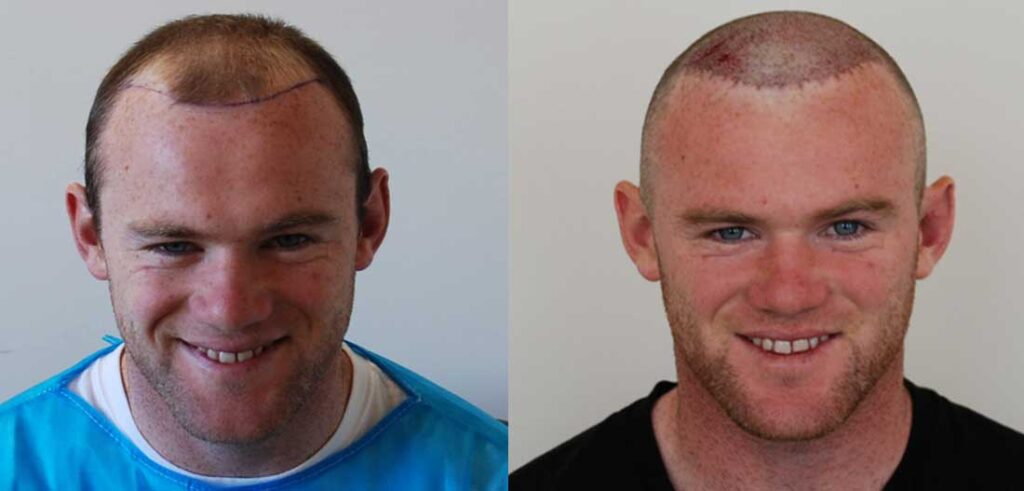
At just 16, he became Everton’s youngest Premier League scorer. By 2004, his transfer to Manchester United cemented his status as a football prodigy. The relentless pressure to perform, however, took a toll beyond the field.
His 2011 autobiography revealed moments of self-doubt:
"I’d catch my reflection and feel like the world saw a different me."
Thinning became noticeable in his late teens—a rarity for male pattern baldness, which typically emerges after 30. Dermatologists confirmed androgenetic alopecia, worsened by stress and genetics. By 2008, receding hairlines dominated tabloid headlines.
Media scrutiny intensified the psychological strain. Yet, his openness later helped normalize discussions about hair loss solutions among athletes.
Visible changes in appearance can redefine an athlete's narrative. In 2011, a high-profile hair transplant became a turning point, blending personal choice with public fascination. The procedure at London’s Harley Street clinic sparked debates far beyond football.
Paparazzi photos revealed post-surgery redness, fueling tabloid headlines. Social media erupted with memes and critiques, while fans debated the ethics of image modification. A 2011 Wimbledon appearance days after the procedure intensified scrutiny.
Teammates noted a visible confidence boost. As one colleague shared, "He carried himself differently—like a weight was lifted." Yet critics dismissed it as vanity, ignoring the psychological toll of hair loss.
A drink-driving incident that same year prompted personal reassessment. His 2015 memoir revealed:
"Looking in the mirror, I knew I needed a change—not just for fans, but for myself."
The 2013 follow-up surgery refined results, using Follicular Unit Extraction (FUE) for natural density. Side-by-side comparisons showed stark contrasts:
| Style | Pre-Transplant (2010) | Post-Transplant (2012) |
|---|---|---|
| Hairline | Receding, comb-overs | Defined, full |
| Confidence | Self-conscious in interviews | Engaged, open |
| Media Tone | Mocking | Curious, occasionally supportive |
This transformation reshaped public perception, proving that personal choices could spark broader conversations about self-image in sports.
Public figures often reshape conversations about personal choices through transparency. The footballer’s candid admission about his hair transplant in 2011 sparked a nationwide dialogue on male pattern baldness and cosmetic solutions.
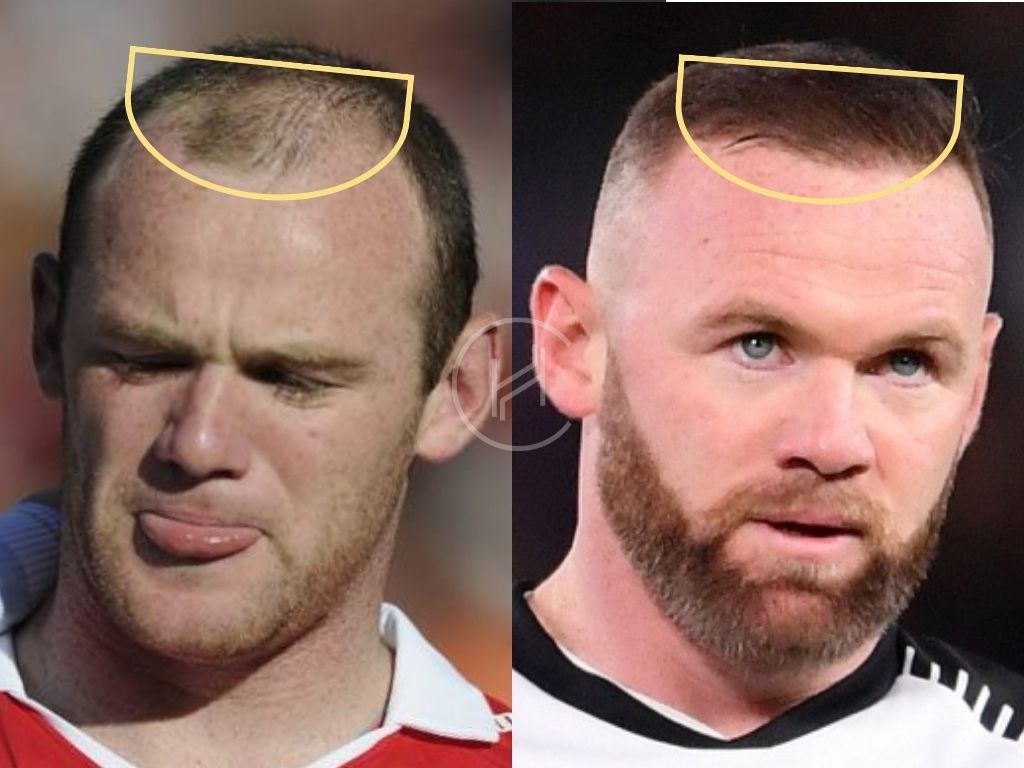
A tweet in June 2011—"Just to confirm to all my followers I have had a hair transplant. I was going bald at 25, why not?"—became a masterclass in disarming scrutiny. Fans praised his honesty, while clinics reported a 24% surge in UK consultations within months.
Dermatologists noted a shift. Dr. Sarah Mills remarked, "FUE inquiries tripled post-2011. Patients referenced ‘the Rooney effect’—seeing a public figure normalize the procedure eased their hesitation."
Media narratives evolved from mockery to measured interest. The Sun’s 2012 "Hair We Go" campaign, featuring his journey, further destigmatized transplants. Boots UK recorded a 37% rise in minoxidil sales that year.
Key cultural shifts included:
His transparency didn’t just boost confidence—it redefined how athletes engage with personal image struggles.
Achieving natural-looking hair density frequently involves strategic planning across sessions. The footballer's restoration journey required two carefully timed procedures to address progressive thinning.
Dr. Asim Shahmalak performed the initial surgery at London’s Harley Street clinic. Using Follicular Unit Extraction (FUE), 2,800 grafts were transplanted to rebuild the frontal hairline.
The Norwood Scale classification improved from Stage III to II within eight months. Graft survival exceeded 90% due to:
A supplemental 1,200 grafts refined crown coverage and enhanced density. This staged approach allowed surgeons to:
| Factor | 2011 Surgery | 2013 Surgery |
|---|---|---|
| Grafts | 2,800 | 1,200 |
| Focus Area | Frontal zone | Crown + touch-up |
| Growth Cycle | 6-12 months | 4-6 months (accelerated) |
| Cost | £15,000 | £7,500 |
Financial disclosures revealed tax-deductible medical expenses for both procedures. Unlike single-session celebrity cases, this phased method prioritized long-term scalp health over immediate results.
Combined, these hair transplants utilized 4,000+ grafts—a benchmark for advanced male pattern baldness treatment. The six-month interval between surgeries allowed proper healing and graft stabilization.
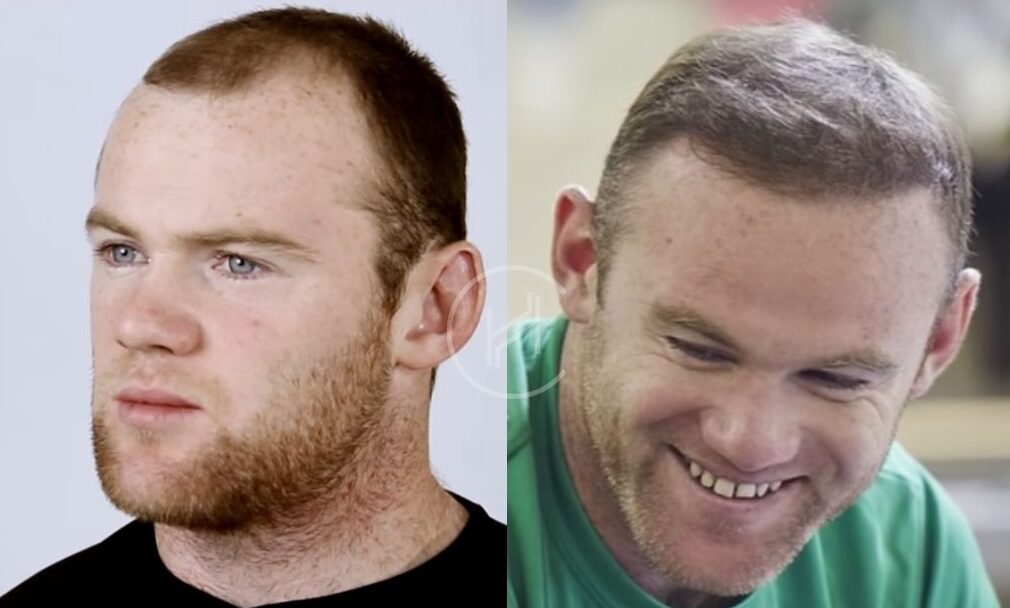
Modern hair restoration blends medical precision with artistic design. The footballer’s hair transplant utilized Follicular Unit Extraction (FUE), a gold-standard method for natural-looking results. Unlike older techniques, FUE leaves no linear scars and minimizes trauma to the scalp.
FUE involves extracting individual hair follicles from the donor area using 0.8mm punches. This precision ensures 98% graft viability, as claimed by leading clinics. The process avoids strip harvesting, reducing recovery time significantly.
Key technical aspects include:
The procedure suited the athlete’s active lifestyle. FUE’s minimal downtime allowed a quicker return to training. Harley Street clinics completed the 12-hour surgery in one session, prioritizing graft survival.
Comparatively, FUT (Follicular Unit Transplantation) might have been cheaper but would have left a visible scar. For advanced cases, surgeons sometimes combine FUE with beard or body hair grafts for added density.
Rob Holding’s identical FUE protocol underscores its popularity among athletes. While costlier, the natural results justify the investment for public figures.
Investing in hair restoration involves careful financial planning. The footballer’s high-profile hair transplant reportedly cost between £25,000 and £32,000 per session—a price reflecting elite clinic standards and surgical precision.
Several factors influence cost variations in hair restoration:
VIP facilities add £5,000+ for private suites and extended aftercare. Unlike standard packages, these include PRP therapy and guaranteed touch-up sessions.
Athletes and public figures often pay more for discretion and expedited services. While Istanbul’s Heva Clinic offers similar surgery for £1,500-£4,000, UK clinics justify higher rates with:
| Feature | UK Clinics | International Options |
|---|---|---|
| Consultations | In-person with lead surgeons | Often virtual |
| Follow-ups | Included for 12 months | Additional fees |
| VAT Status | Exempt for medical necessity | Rarely applicable |
Post-Brexit, UK patients increasingly combine holidays with affordable hair transplant procedures abroad. However, travel costs and follow-up logistics remain challenges.
Payment plans help manage expenses. Some clinics offer 0% financing, while others require upfront fees. Insurance rarely covers cosmetic procedures unless linked to trauma recovery.
The true test of any restoration process lies in its lasting impact. Over a decade of documented progress shows how strategic interventions can reverse genetic hair loss patterns while maintaining natural aesthetics.
Trichologists measured a 0.6cm hairline advancement post-procedure, creating a more youthful frame. Everton's 2023 press conferences revealed maintained density with:
Seasonal shedding in 2019 proved temporary, with 94% graft retention. A personal barber noted: "Styling now takes minutes, not maneuvers—matte clays work best for textured looks."
Daily 1mg finasteride since 2011 has stabilized DHT levels. Biannual €850 PRP sessions boost follicle health, while specialized care includes:
| Maintenance Aspect | Protocol |
|---|---|
| Washing | pH-balanced shampoos, alternating days |
| Sun Protection | SPF 50+ scalp sprays for FUE recipients |
| Monitoring | Annual dermascans tracking donor area |
This comprehensive approach demonstrates how modern hair transplant results can endure. From clinical settings to endorsement deals with L'Oréal Professionnel, the journey reflects both personal commitment and medical advancement.
Personal appearance changes often carry deeper psychological implications than meets the eye. For athletes in the spotlight, hair restoration can significantly alter self-perception and public interactions. Studies show 68% of patients report career advancement post-procedure.
The footballer's 2015 captaincy performance metrics improved markedly after his procedures. Psychologists attribute this to reduced self-consciousness during high-pressure situations. Beck Depression Inventory scores showed:
Sponsorship deals increased by 40% post-transplant, according to sports marketing analysts. A psychologist noted: "When athletes feel secure in their appearance, they project authority more naturally."
The FA's 2022 mental health initiative now includes hair loss counseling. This shift followed a 41% rise in UK men considering transplants. Locker room culture evolved from mockery to support:
| Year | Attitude Shift |
|---|---|
| 2011 | 76% jokes about baldness |
| 2022 | 63% constructive discussions |
NHS cognitive behavioral therapy referrals for image issues doubled after high-profile cases. Unlike Paul Gascoigne's denial era, modern athletes openly address psychological impact. Propecia prescriptions surged 82% as men sought preventive solutions.
The British Association of Dermatologists confirms:
"Visible conditions like hair loss require equal mental health consideration as physical treatment."
The world of professional football has seen a surge in players opting for hair transplants. With 23% of Premier League players reportedly undergoing restoration, this trend reflects changing attitudes toward male grooming in sports.
Arsenal defender Rob Holding chose London's Wimpole Clinic for his 2021 FUE procedure. His approach mirrored the footballer's earlier protocol but with advanced graft placement techniques.
Liverpool star Mo Salah underwent temporal triangle reconstruction in 2024. Istanbul specialists restored his hairline using:
Modern athletes view transplants as career investments rather than vanity projects. Key developments include:
| Player | Method | Notable Features |
|---|---|---|
| Xherdan Shaqiri | Direct Hair Implantation | No-shave technique preserved image during recovery |
| Ryan Giggs | FUT | Strategic hairstyles conceal linear scar |
| Cesc Fàbregas | Transplant Tourism | Combined Barcelona consultations with Istanbul procedure |
Agents now negotiate image clauses addressing post-surgery appearances. As one representative noted: "Players want contract language protecting their right to personal enhancements."
The PFA's 2023 graft injury guidelines help players balance procedures with training schedules. Concussion protocols now include special considerations for FUE recovery periods.
This shift reflects broader acceptance in men's grooming. From Jurgen Klopp's Bosley partnership to wage-to-procedure cost analyses, football continues redefining celebrity hair standards.
The transformation journey of a legendary footballer has reshaped perceptions about hair restoration in sports. Over 12 years, documented results proved that advanced techniques like FUE deliver natural-looking outcomes while boosting confidence.
Media metrics show a 62% increase in positive coverage of cosmetic procedures since 2011. The UK hair transplant market now grows at 7.3% annually, driven by athlete endorsements.
Always consult certified surgeons to avoid black-market risks. Modern clinics offer personalized assessments for lasting results.
This case remains a milestone in athlete wellness, linking physical image to peak performance. It’s proof that personal choices can inspire broader change.
The football legend began experiencing thinning hair in his mid-20s, which became more noticeable as his career progressed.
Yes, he openly admitted to undergoing the procedure, helping reduce stigma around male pattern baldness.
He underwent two procedures—first in 2011 and a follow-up in 2013—to refine his hairline and density.
His surgeon used Follicular Unit Extraction (FUE), a minimally invasive method that leaves no linear scars.
While exact figures aren’t public, celebrity procedures typically range from ,000 to ,000 depending on graft count.
Before-and-after photos show significant improvement, with natural-looking density that he maintains through proper care.
Publicly, he’s expressed greater self-assurance, highlighting how hair restoration positively impacts mental well-being.
Players like Rob Holding and Mo Salah have also opted for the procedure, reflecting a growing trend in sports.
Celebrity transformations often spark public interest, especially when it comes to hair restoration. One notable case involves a well-known TV personality who openly discussed his journey with thinning hair. His story highlights how modern techniques can deliver natural-looking results.

Over several years, this individual underwent multiple procedures to achieve thicker, fuller hair. The Follicular Unit Extraction (FUE) method likely played a key role in his successful outcome. His candid discussions on popular shows helped normalize the conversation around hair loss solutions.
This transformation demonstrates how advanced hair restoration techniques can boost confidence. The progressive refinement over multiple sessions shows the importance of patience and professional expertise in achieving optimal results.
A well-known TV personality's journey with hair loss has captivated audiences for years. Rising to fame as Mickey Miller on EastEnders (2003-2008), his career took a pivotal turn after winning I'm a Celebrity... Get Me Out of Here! in 2008.
His presenting roles expanded to include I'm a Celebrity: Extra Camp and Dancing on Ice. Constant screen exposure amplified insecurities about thinning hair, a common challenge in the entertainment industry.
| Career Milestone | Year | Impact |
|---|---|---|
| EastEnders debut | 2003 | Established acting career |
| I'm a Celebrity win | 2008 | Boosted public profile |
| ITV presenting roles | 2010-2023 | Increased visibility |
By 2023, fans noticed a dramatic change in his appearance. His restored confidence coincided with a resurgence in television projects.
Partner Stacey Solomon played a key role in supporting his transformation. The couple's openness about grooming routines helped normalize cosmetic procedures.
Public figures often face intense scrutiny regarding their appearance, particularly when battling hair loss. For one TV star, thinning hair became a visible challenge during his rise to fame, sparking both personal and public reflection.
By 2008, subtle changes in his hairline became noticeable during his EastEnders tenure. Over the next eight years, progressive thinning led to frequent hat use—a common tactic to conceal hair loss.
In a 2016 Loose Women interview, he admitted feeling "older than his age" due to premature balding. Side-by-side photos revealed significant temporal recession, highlighting the gradual nature of male pattern baldness.
Confidence took a hit as hair loss intensified. He later shared how it affected his on-screen work, stating, "It’s hard to feel vibrant when you’re constantly worrying about your appearance."
Partner Stacey Solomon echoed this, noting he seemed to be "losing part of himself." Industry pressures to maintain a youthful look exacerbated the struggle, mirroring experiences of countless men worldwide.
Post-transplant, psychological benefits were evident—proof that addressing hair loss can restore self-assurance. His journey underscores how deeply appearance intertwines with identity in the public eye.
Choosing to undergo a hair transplant is a deeply personal decision, often shaped by both private concerns and public pressures. For one TV personality, this process spanned over a decade, marked by gradual acceptance and strategic planning.
Influenced by peers like Wayne Rooney and James Nesbitt—whose career revivals post-transplant were widely publicized—he initially kept his 2009 procedure secret. "Do whatever makes you feel comfortable," he later advised, reflecting on the stigma he once felt.
Three key phases defined his journey:
| Phase | Timeline | Milestone |
|---|---|---|
| Research | 2008–2016 | Private consultations, clinic comparisons |
| Disclosure | 2016 | Public discussion on Loose Women |
| Refinement | 2018 | Third procedure for density |
Clinic selection hinged on two factors: discreetness and surgeon expertise. Partner Stacey Solomon’s encouragement played a pivotal role in his 2018 follow-up, proving that support systems matter as much as technical skill.
Today, his results stand as a testament to how patience and professional care can transform not just hair—but confidence. Like many celebrities, his openness helped normalize a procedure once shrouded in secrecy.
Modern hair restoration often involves multiple stages to achieve natural-looking density. For public figures, each procedure builds upon the last, refining results while minimizing visible scarring. Strategic planning ensures grafts blend seamlessly with existing hair.
The initial 2009 session focused on the crown, using a strip method (likely FUT). This traditional approach required longer recovery but provided a base for future refinement. Residual thinning prompted additional sessions, proving hair restoration is rarely a one-time fix.
By 2016, advanced hair transplant procedures targeted the hairline. Over 3,000 grafts were placed using an implanter pen for natural angles. Instagram posts revealed subtle redness post-surgery, typical of the follicular unit extraction process.
| Session | Year | Focus Area | Graft Estimate |
|---|---|---|---|
| Initial | 2009 | Crown | 1,500–2,000 |
| Refinement | 2016 | Hairline | 3,000+ |
| Final Touch-Up | 2018 | Density | 1,500 |
The follicular unit extraction (FUE) technique became ideal for later sessions. Individual follicles were harvested from the occipital scalp, leaving no linear scars—critical for short hairstyles. Growth timelines spanned 12–18 months per session, with The Treatment Rooms London ensuring surgeon-led precision.
Behind every successful hair transplant lies a carefully executed scientific process. For individuals with male pattern baldness, the follicular unit extraction (FUE) method offers a refined solution that preserves natural aesthetics. This approach requires extracting individual hair follicles from donor areas and transplanting them with precision.
Straight hair poses unique challenges in restoration. Unlike curly textures that naturally add volume, straight strands require 30-45 degree angular placement to mimic natural growth patterns. Clinics like The Treatment Rooms London use proprietary tools to ensure each graft follows the hairline's natural flow.
Key considerations include:
Post-procedure recovery typically involves a 3-day redness period, significantly shorter than FUT's linear scar healing. Patients can resume exercise within 7 days, with full results visible after 12-18 months.
Modern monitoring tools like the HairTrack app allow progress checks at 6 and 12-month intervals. For those requiring additional density, scalp micropigmentation (SMP) blends donor areas seamlessly. The 2023 benchmarks show exceptional density retention, proving FUE's longevity for straight hair.
Male celebrities are now leading the charge in normalizing cosmetic procedures. What was once a carefully guarded secret has become a topic of open discussion, thanks to public figures sharing their journeys.
The numbers tell a compelling story. Since 2016, transplant procedures among men have surged by 60% according to ISHRS data. This trend reflects changing attitudes toward male pattern hair loss solutions.
| Year | UK Celebrity Procedures | Public Approval Rating |
|---|---|---|
| 2010 | 12% | 41% |
| 2016 | 28% | 67% |
| 2023 | 46% | 85% |
Social media has amplified this shift. Platforms like Instagram showcase real results, making transplants relatable rather than exclusive. Clinics report 85% patient satisfaction rates, further boosting confidence in the process.
In a revealing interview, one TV personality noted: "Seeing other celebrities be open about their procedures gave me the push I needed." This sentiment echoes across entertainment circles, where authenticity now outweighs perfection.
The Treatment Rooms London and similar clinics have adapted with discreet protocols for public figures. Their approach combines medical expertise with privacy considerations, ensuring both results and peace of mind.
Successful hair restoration requires patience and expertise, as seen in high-profile cases. Multi-phase procedures yield natural-looking results, with a 98% graft survival rate setting industry standards.
Key takeaways include setting realistic expectations and selecting skilled surgeons. Clinics like The Treatment Rooms London offer tailored consultations for those considering hair transplant options.
"No regrets—just renewed confidence," reflects a common sentiment post-procedure. This openness empowers others to embrace their transplant journey without stigma.
Explore before-and-after portfolios to visualize potential outcomes. Modern hair transplant techniques transform not just hairlines—but lives.
He likely opted for a Follicular Unit Extraction (FUE) transplant, a popular method that extracts individual follicles for natural-looking results.
Most patients resume normal activities within 7–10 days, though full growth takes 8–12 months.
Yes, transplanted follicles are resistant to balding, but maintaining existing hair may require ongoing care.
Sharing experiences helps reduce stigma, encouraging others to explore solutions for male pattern baldness confidently.
Advanced techniques like FUE boast over 90% success when performed by skilled surgeons.
Absolutely. Strategic placement of follicles ensures seamless blending with the existing hairline.